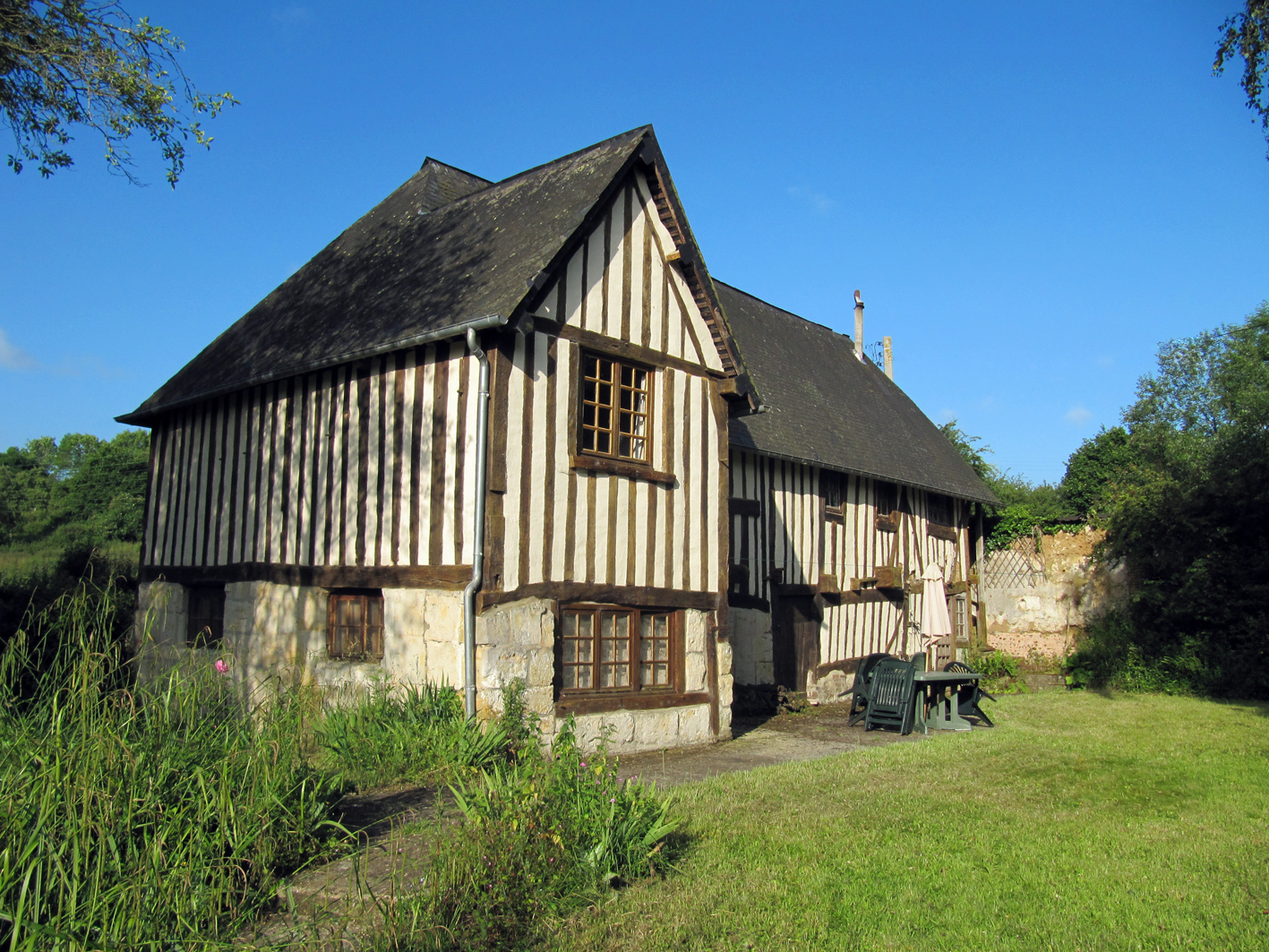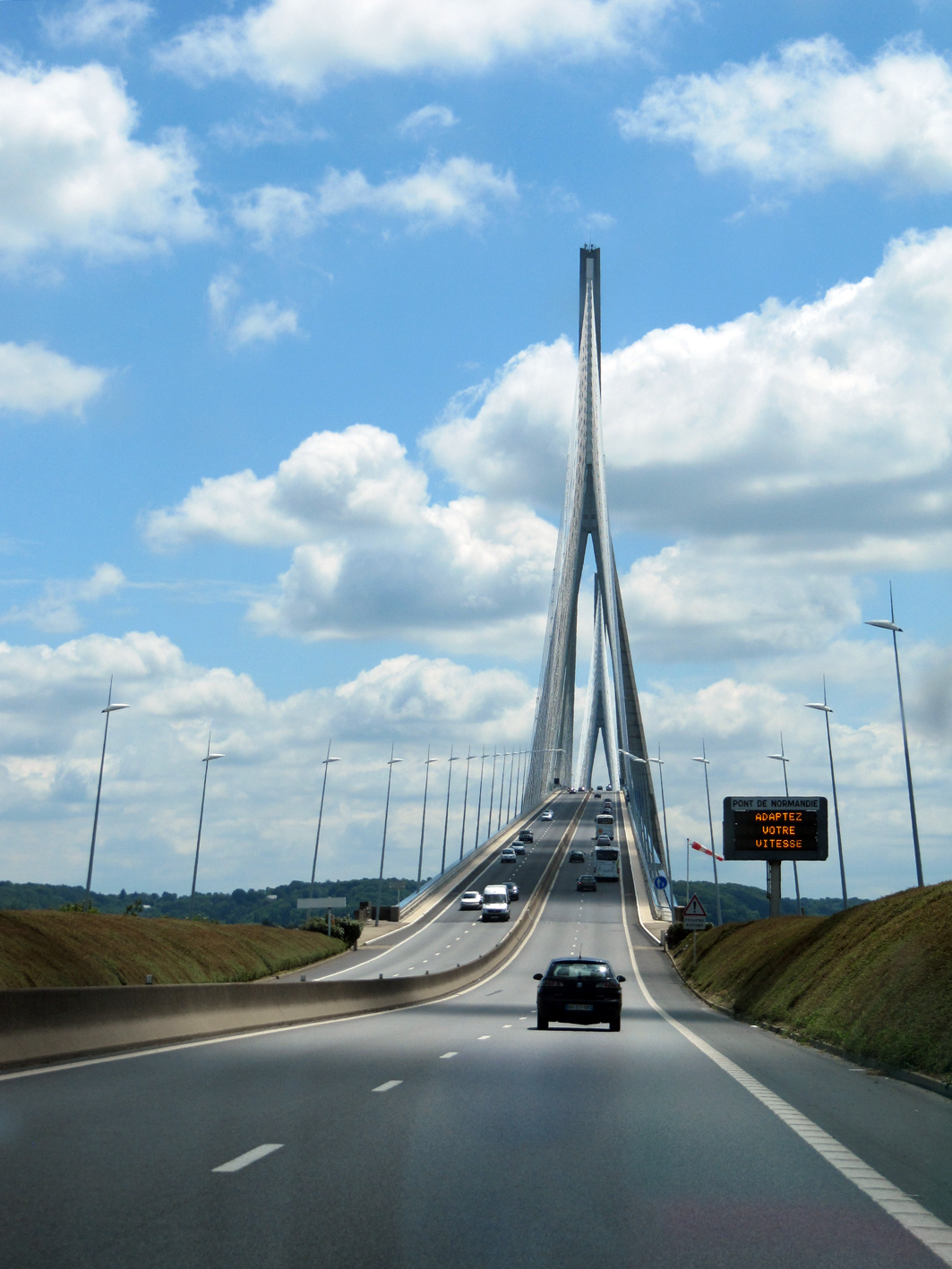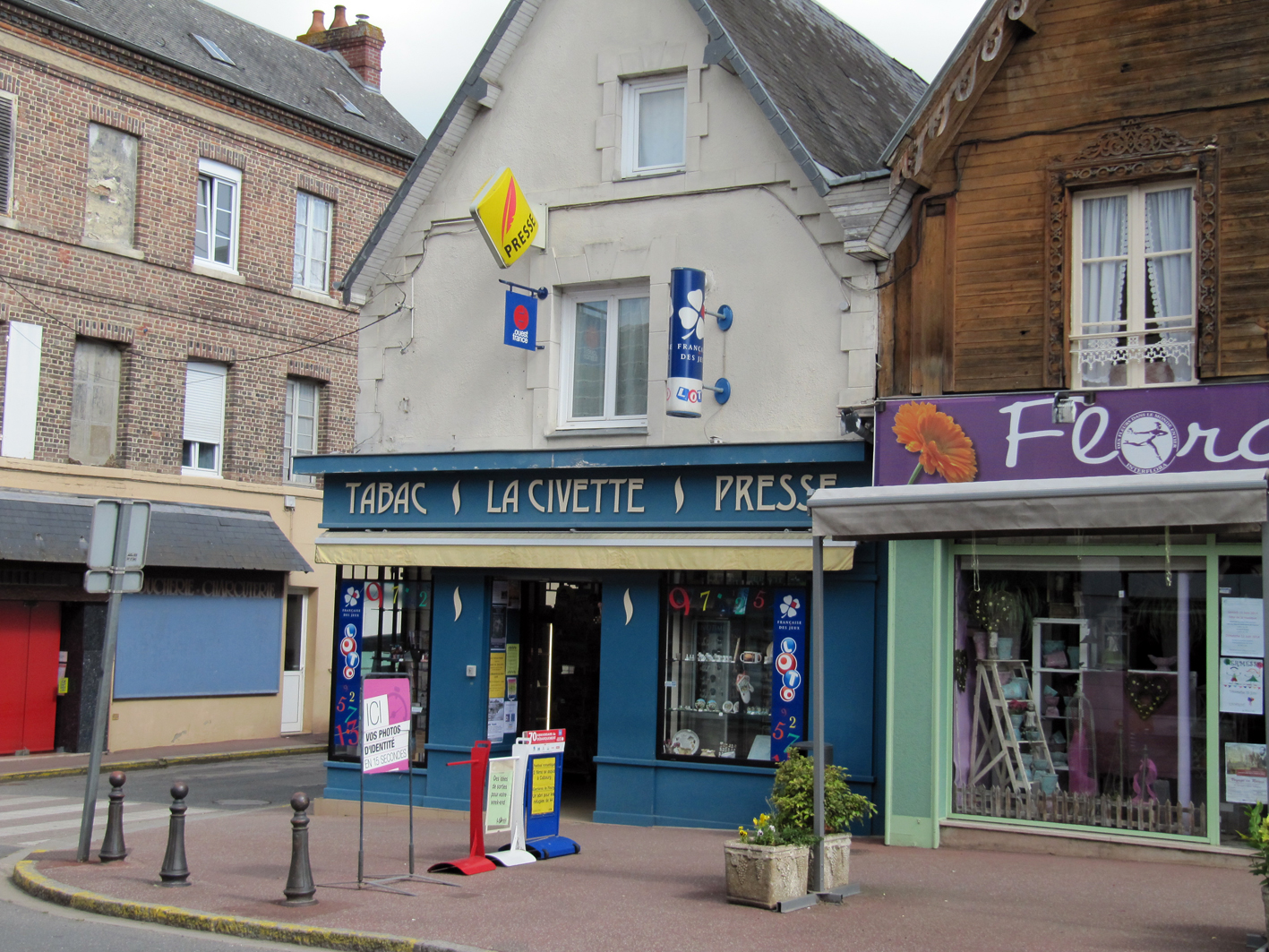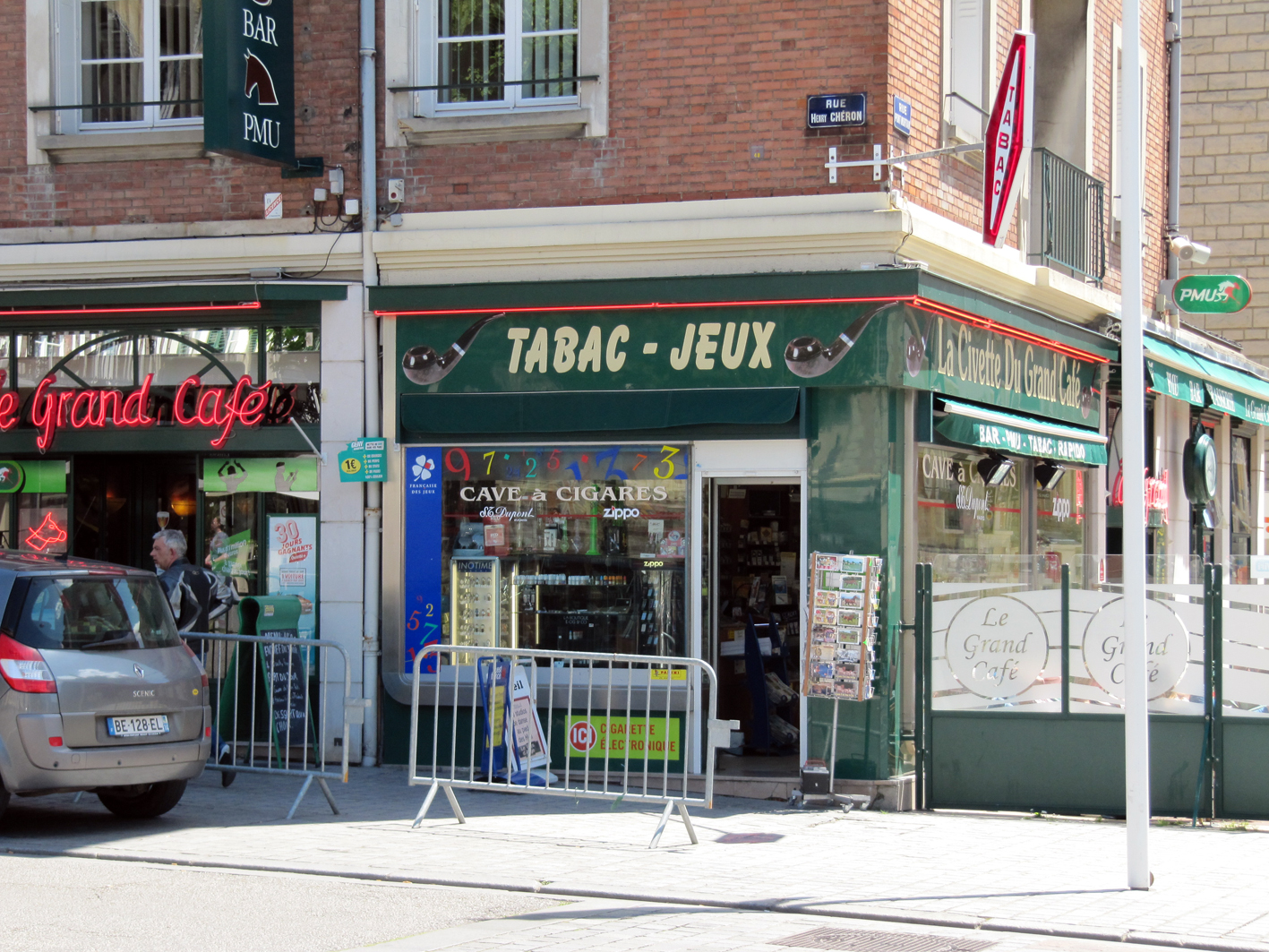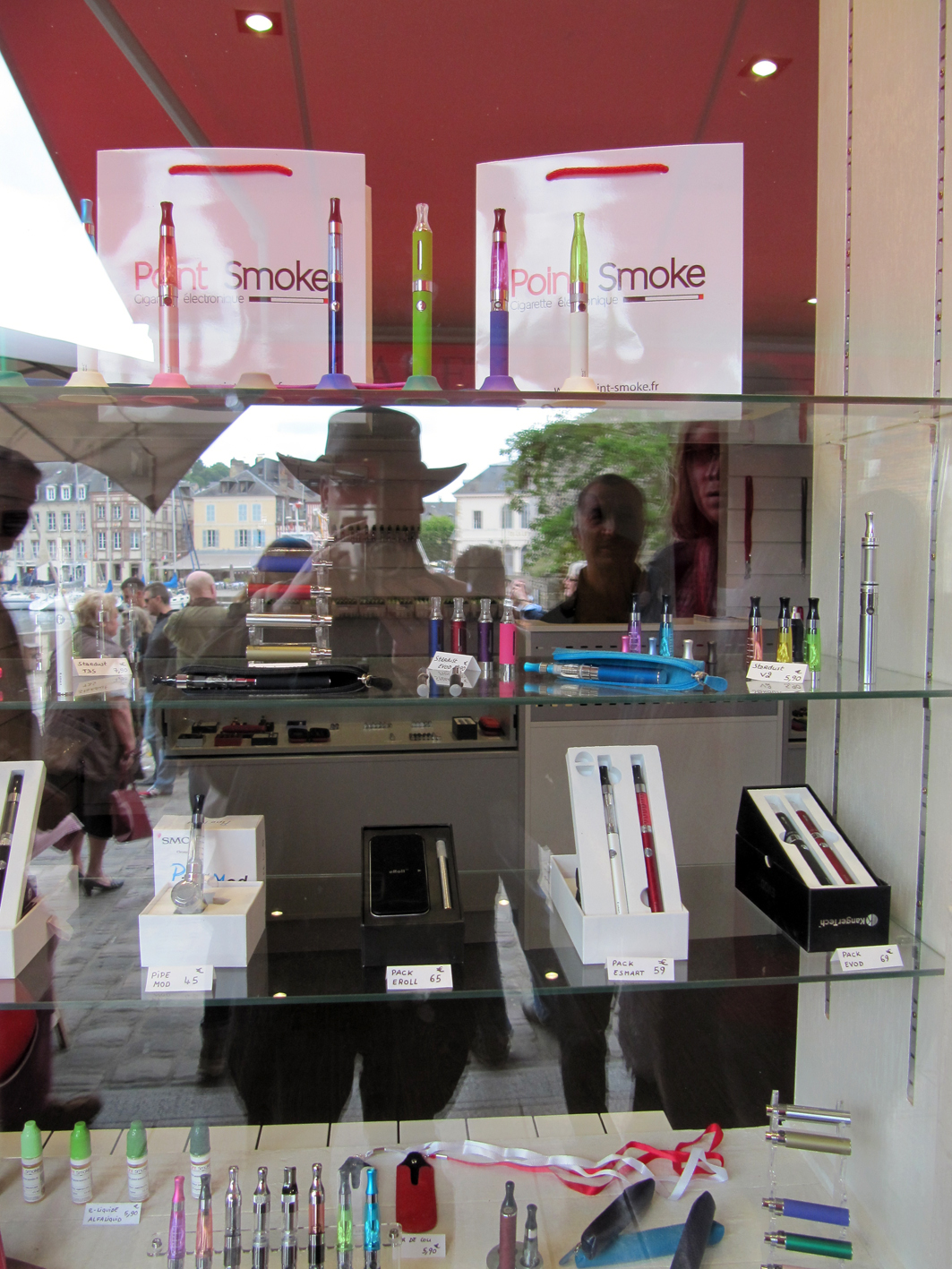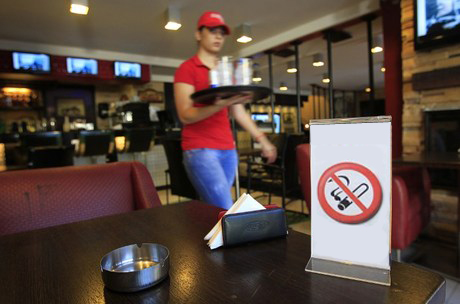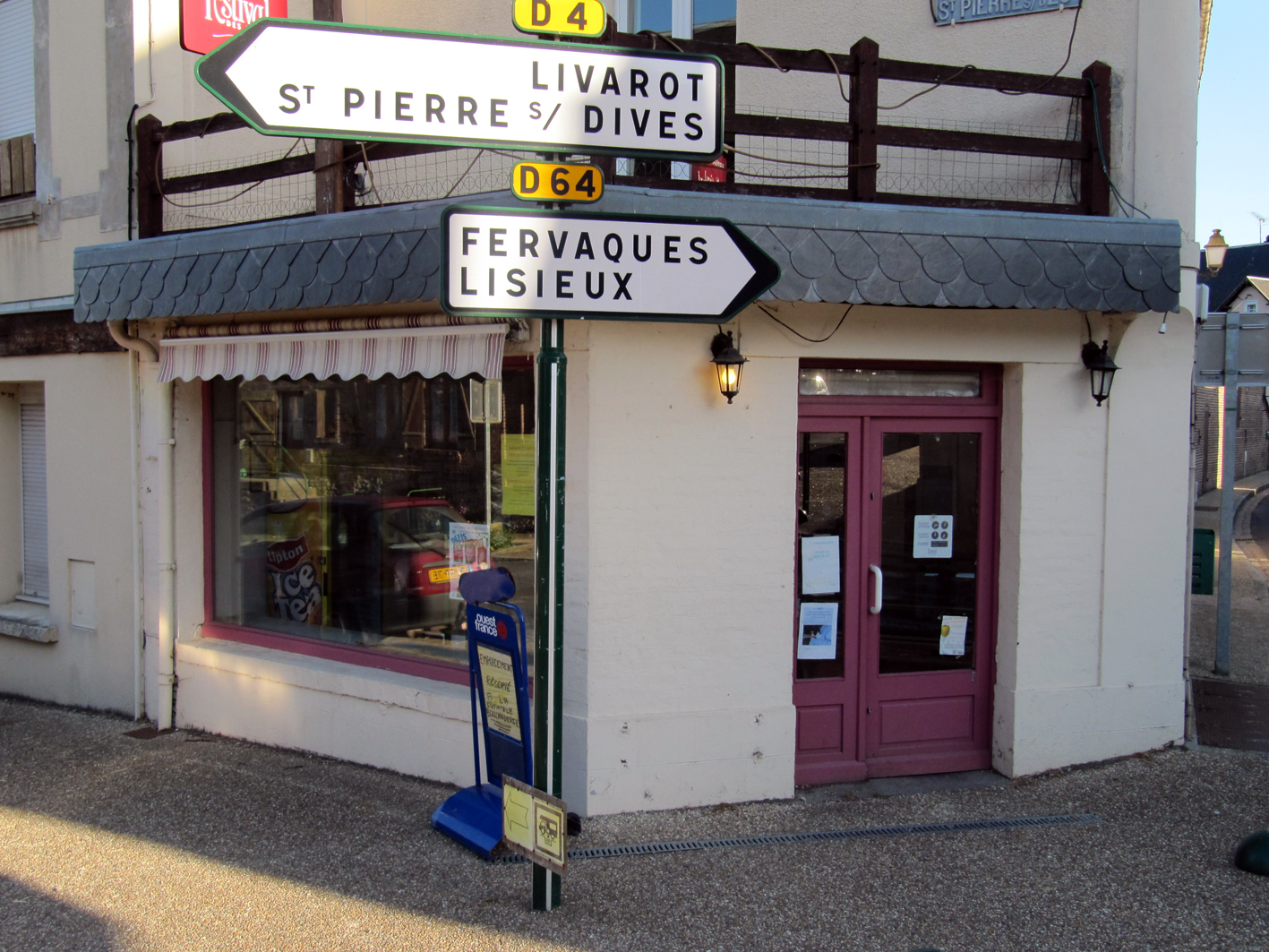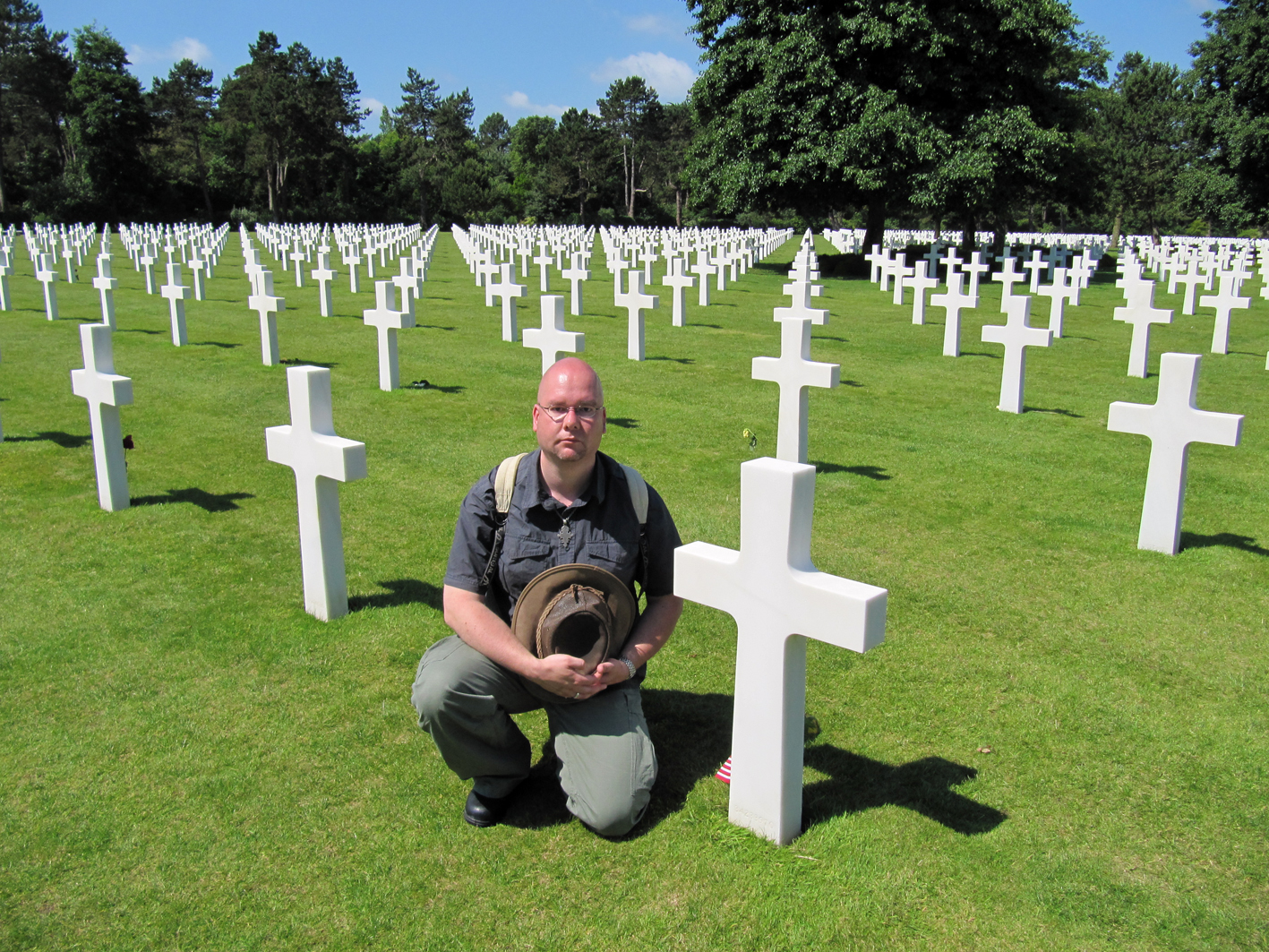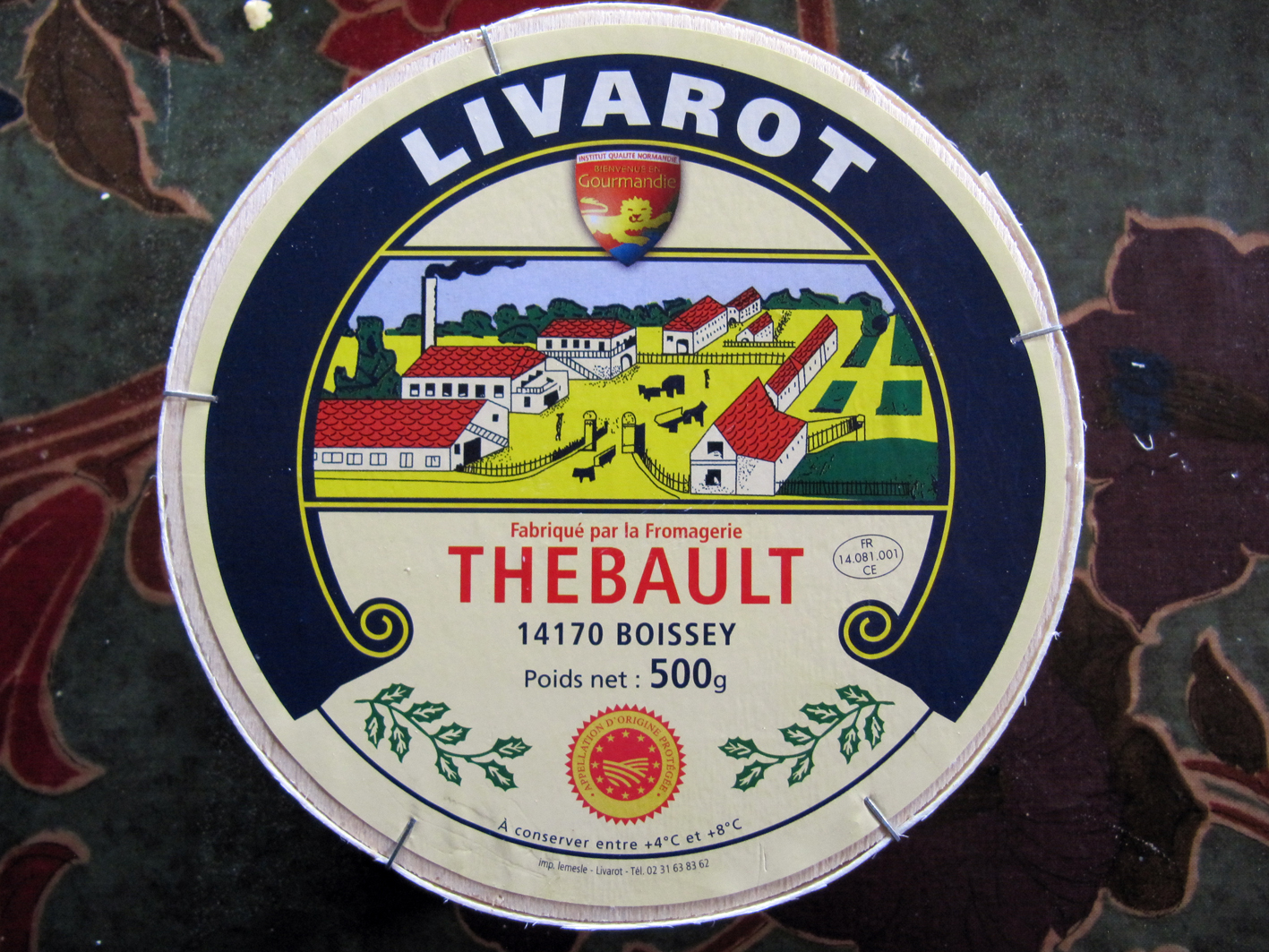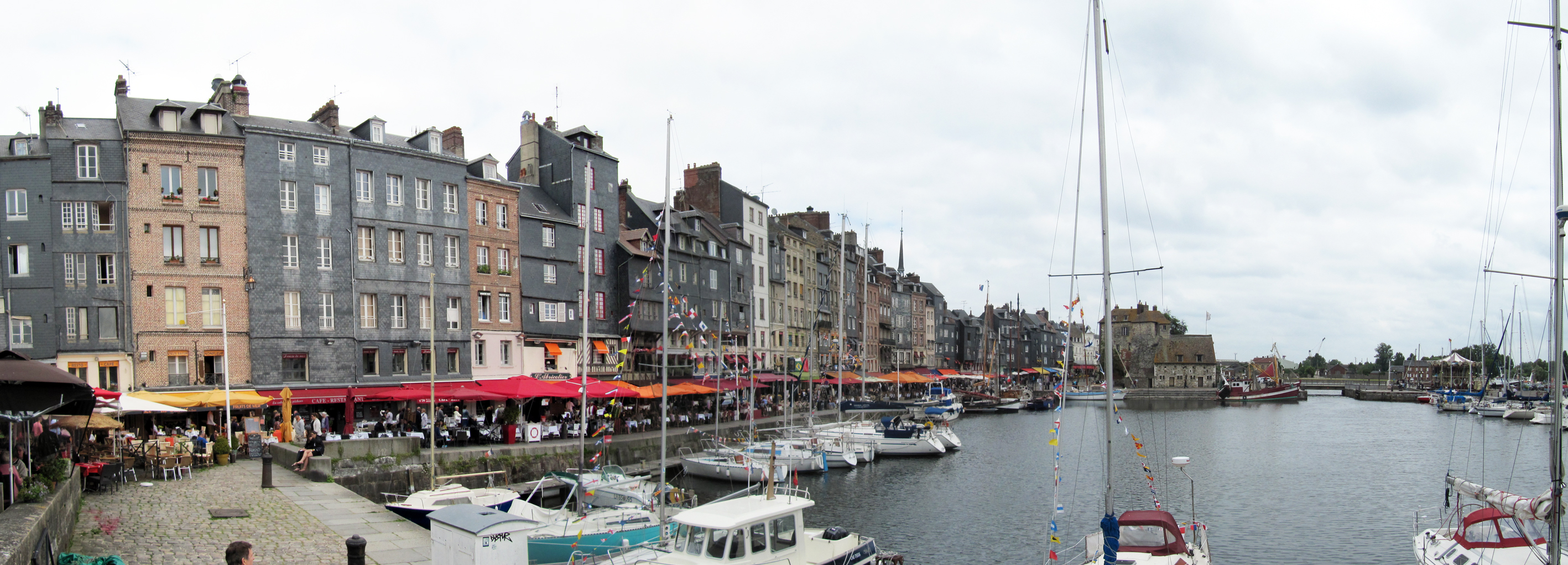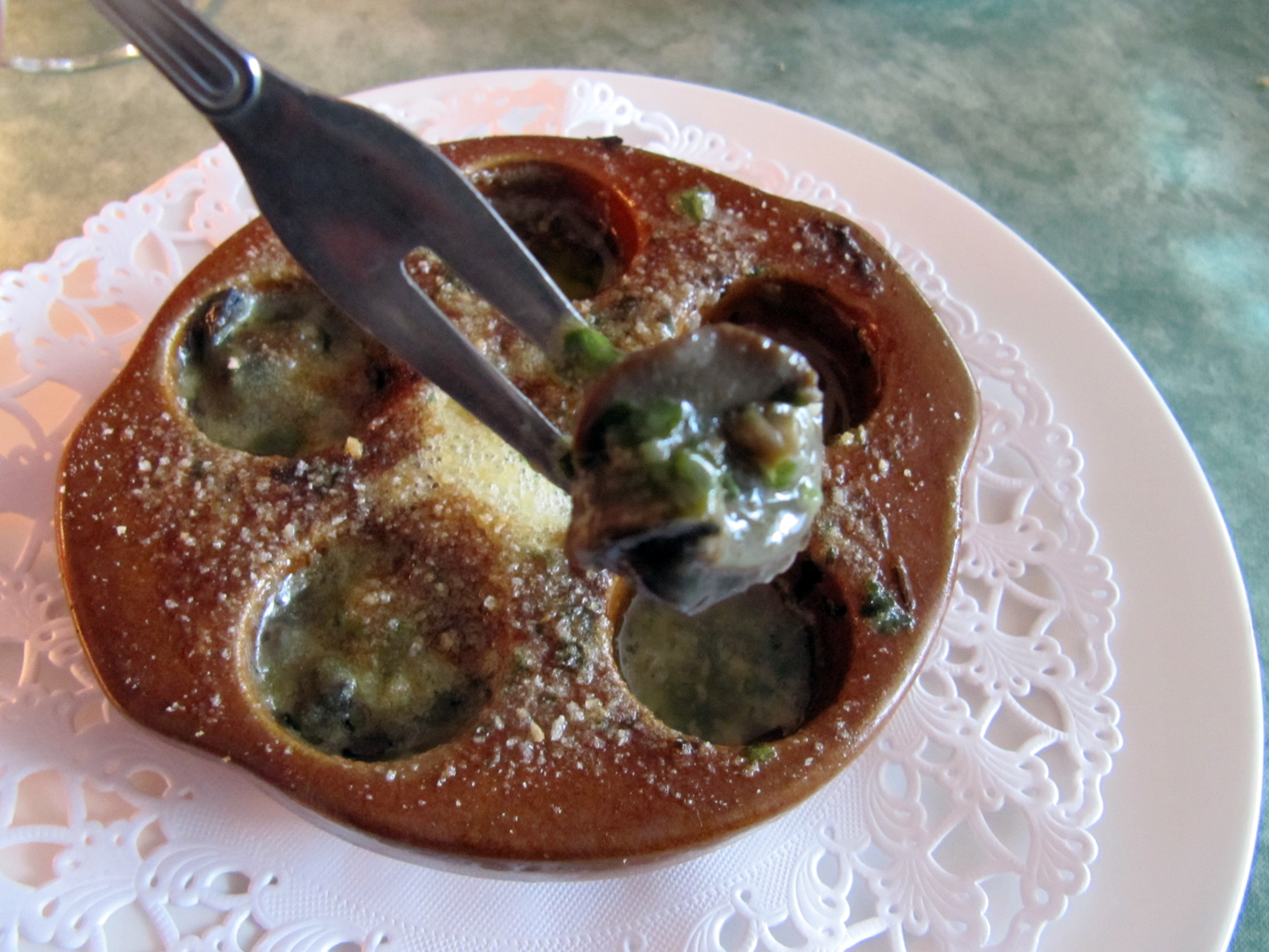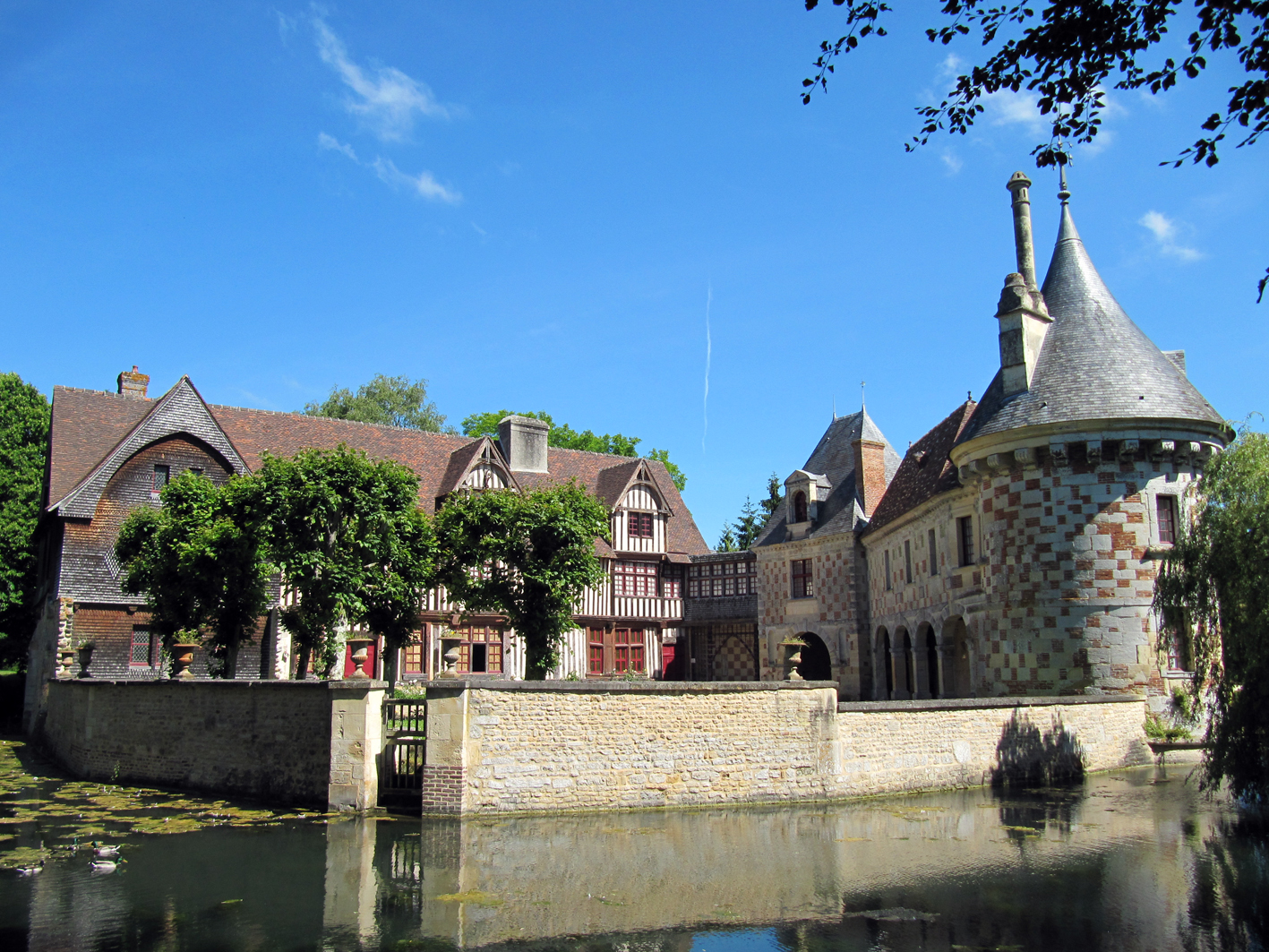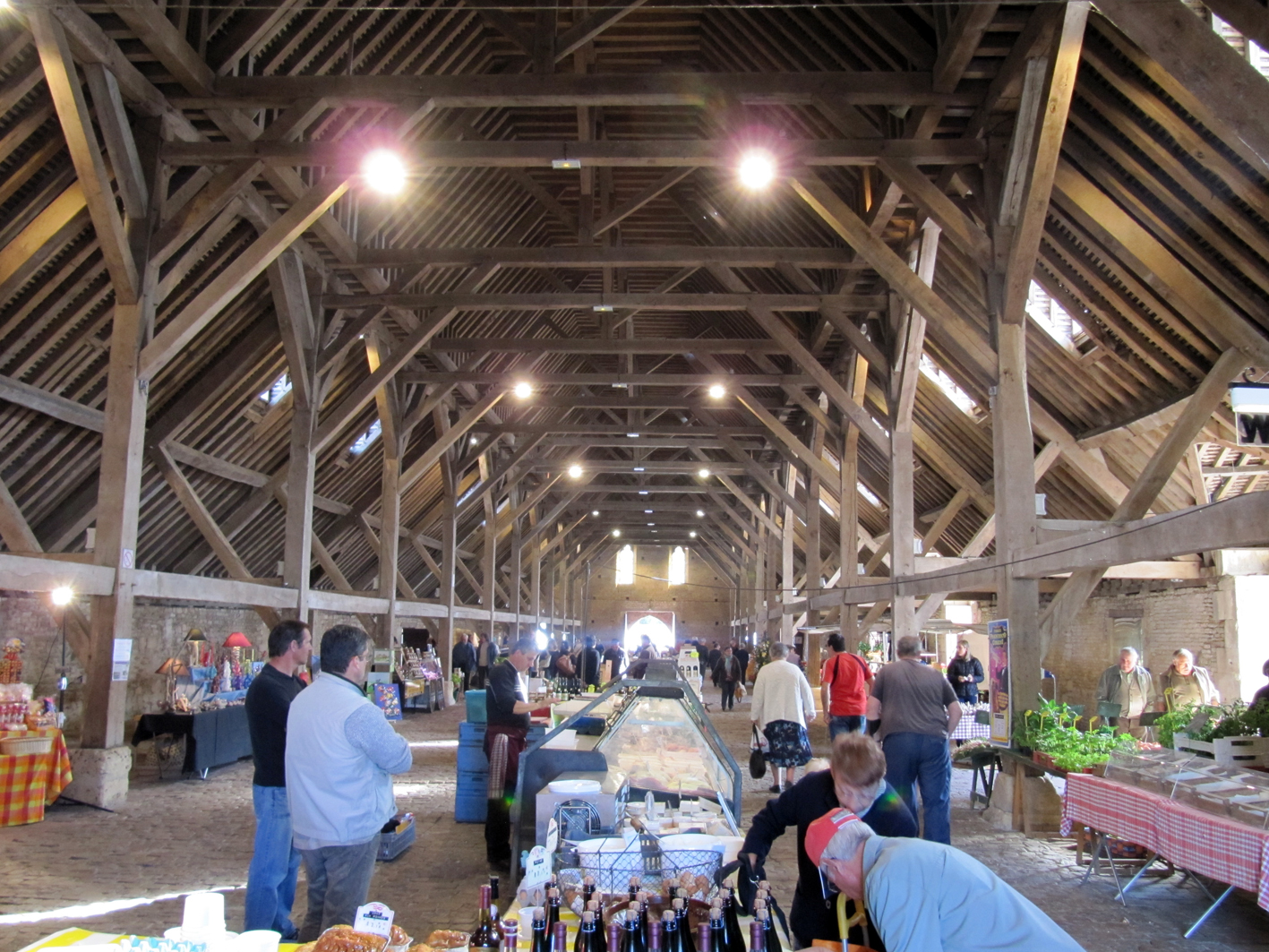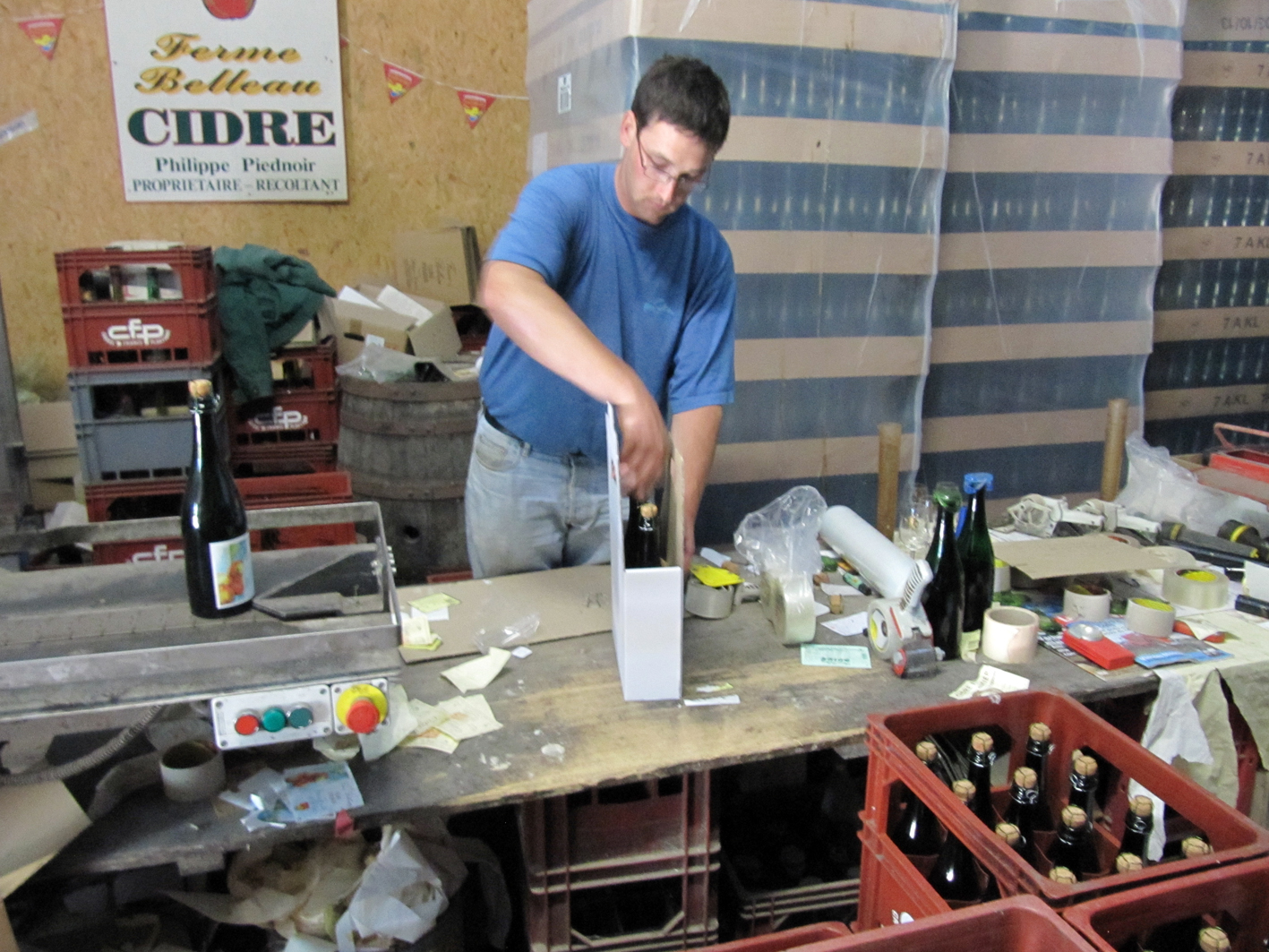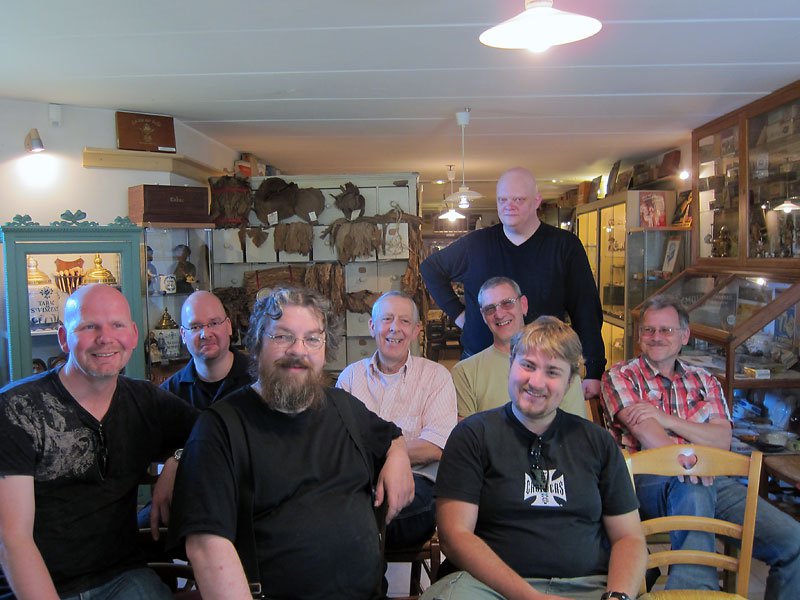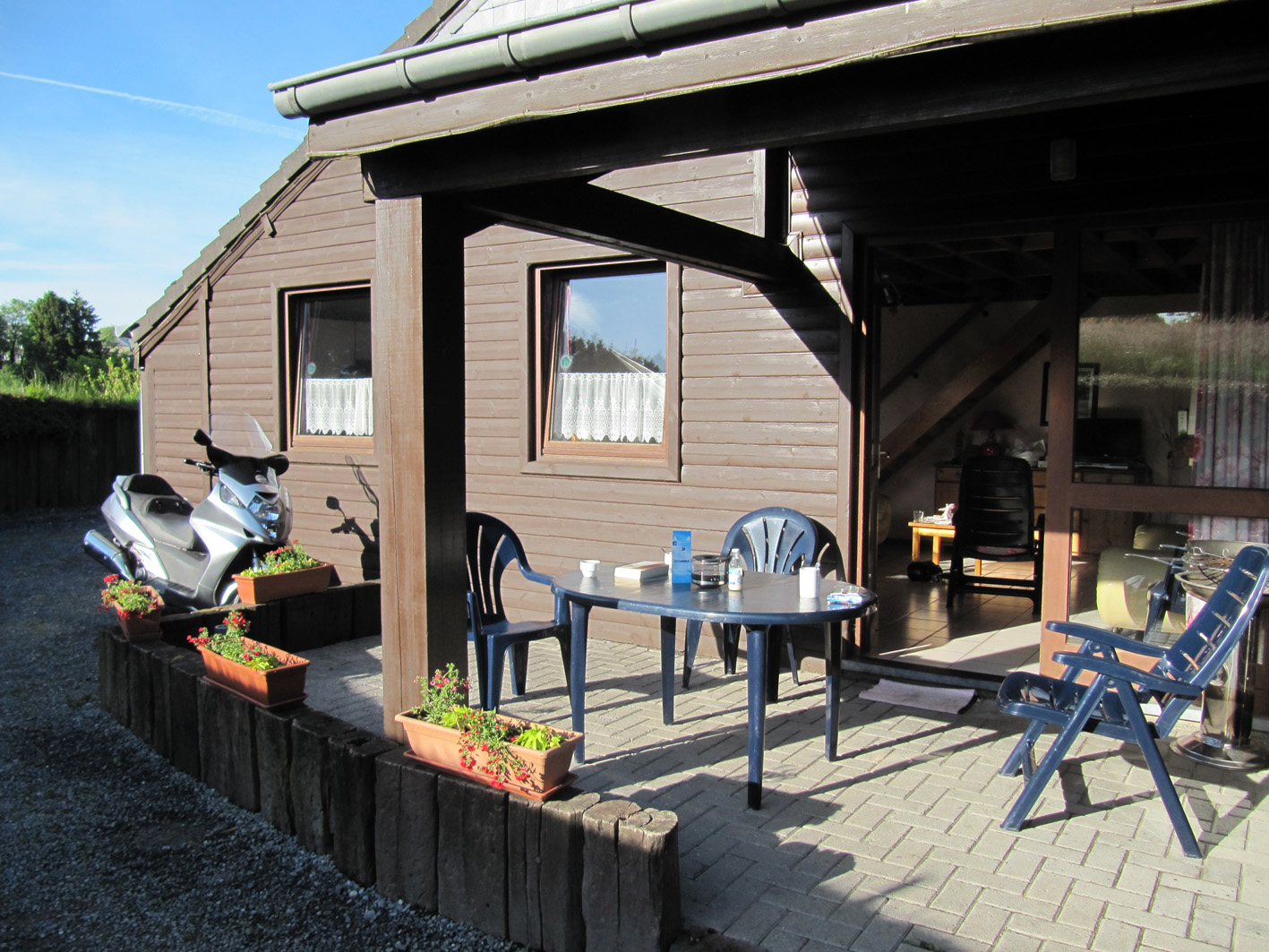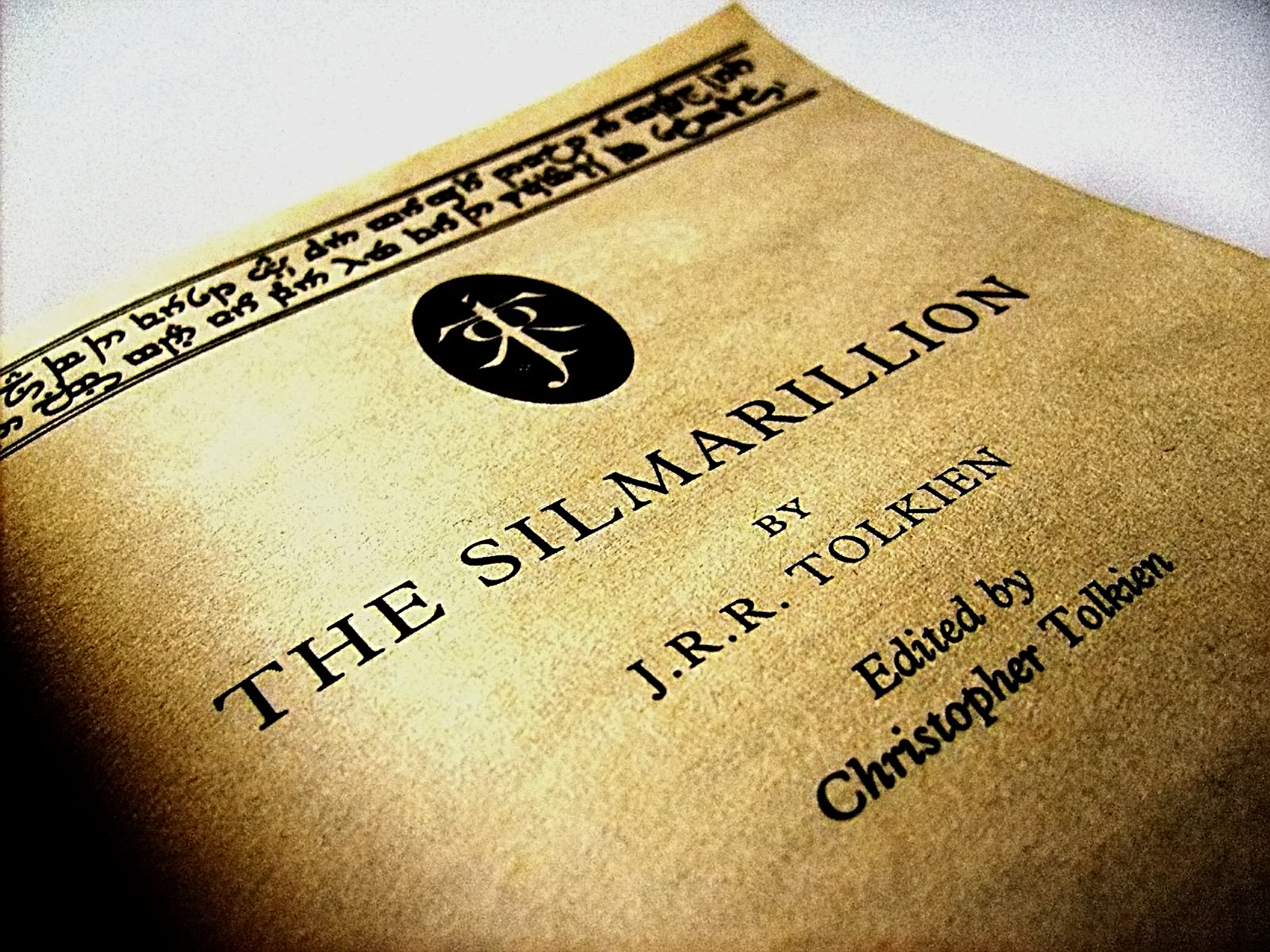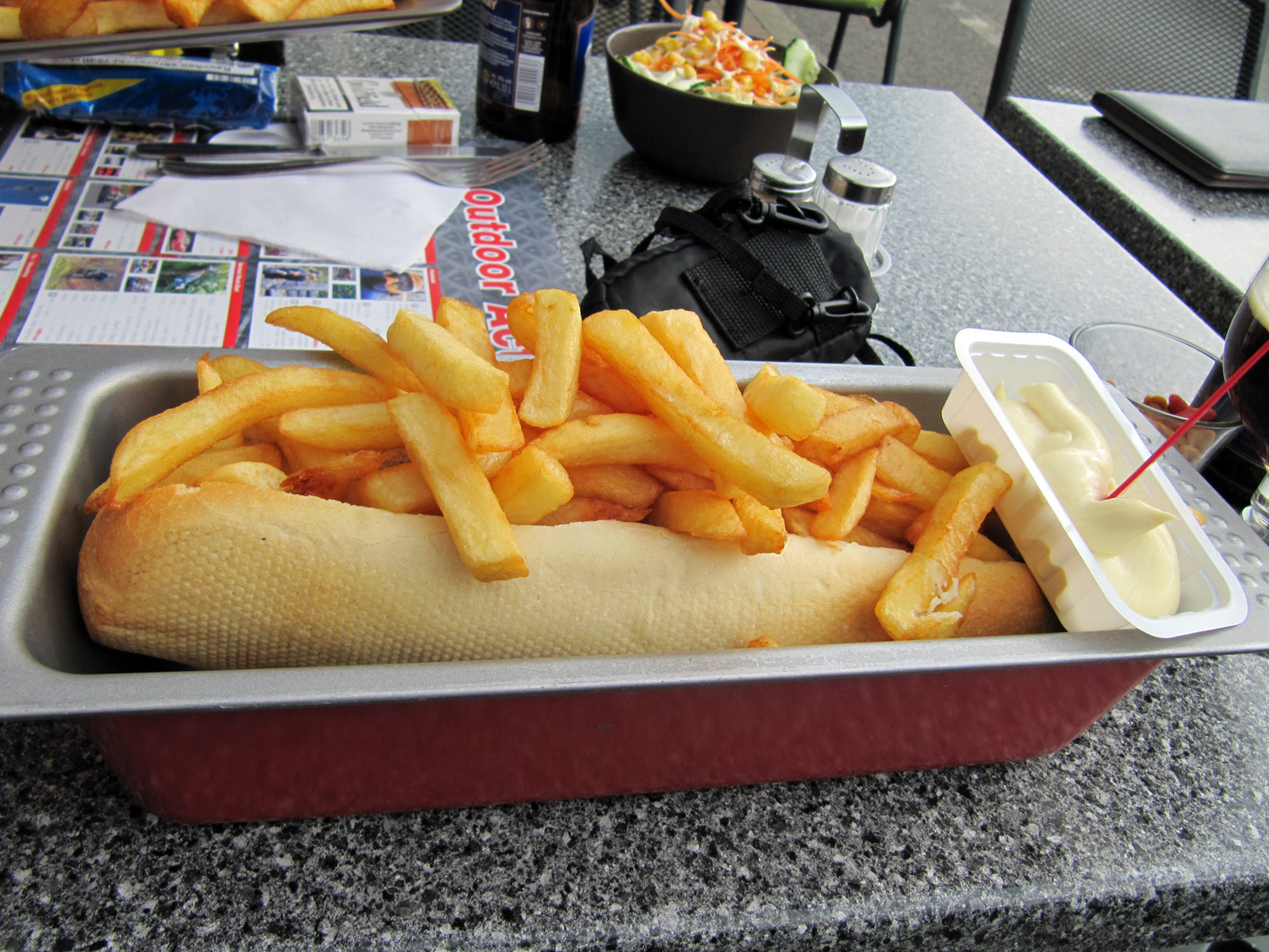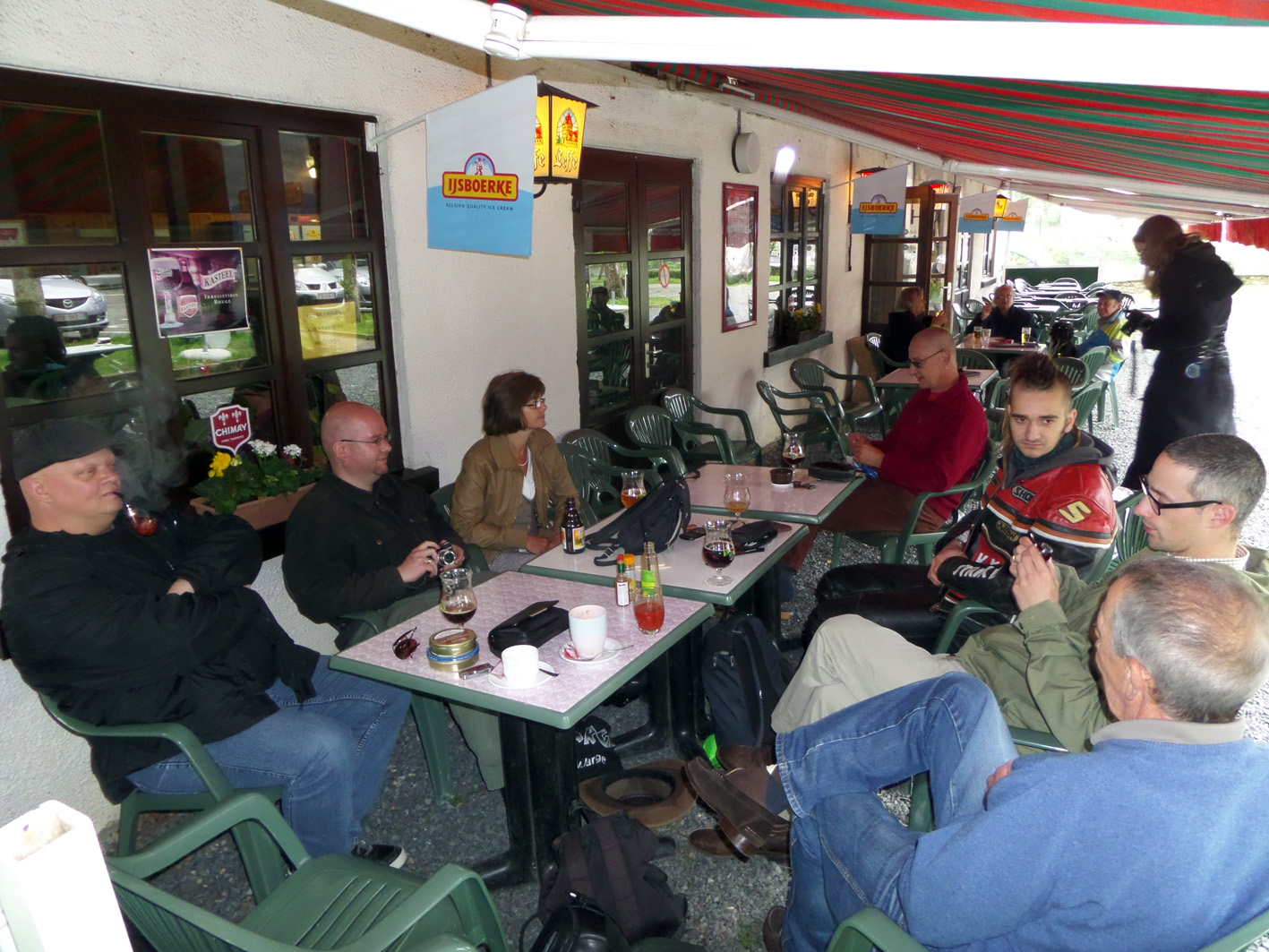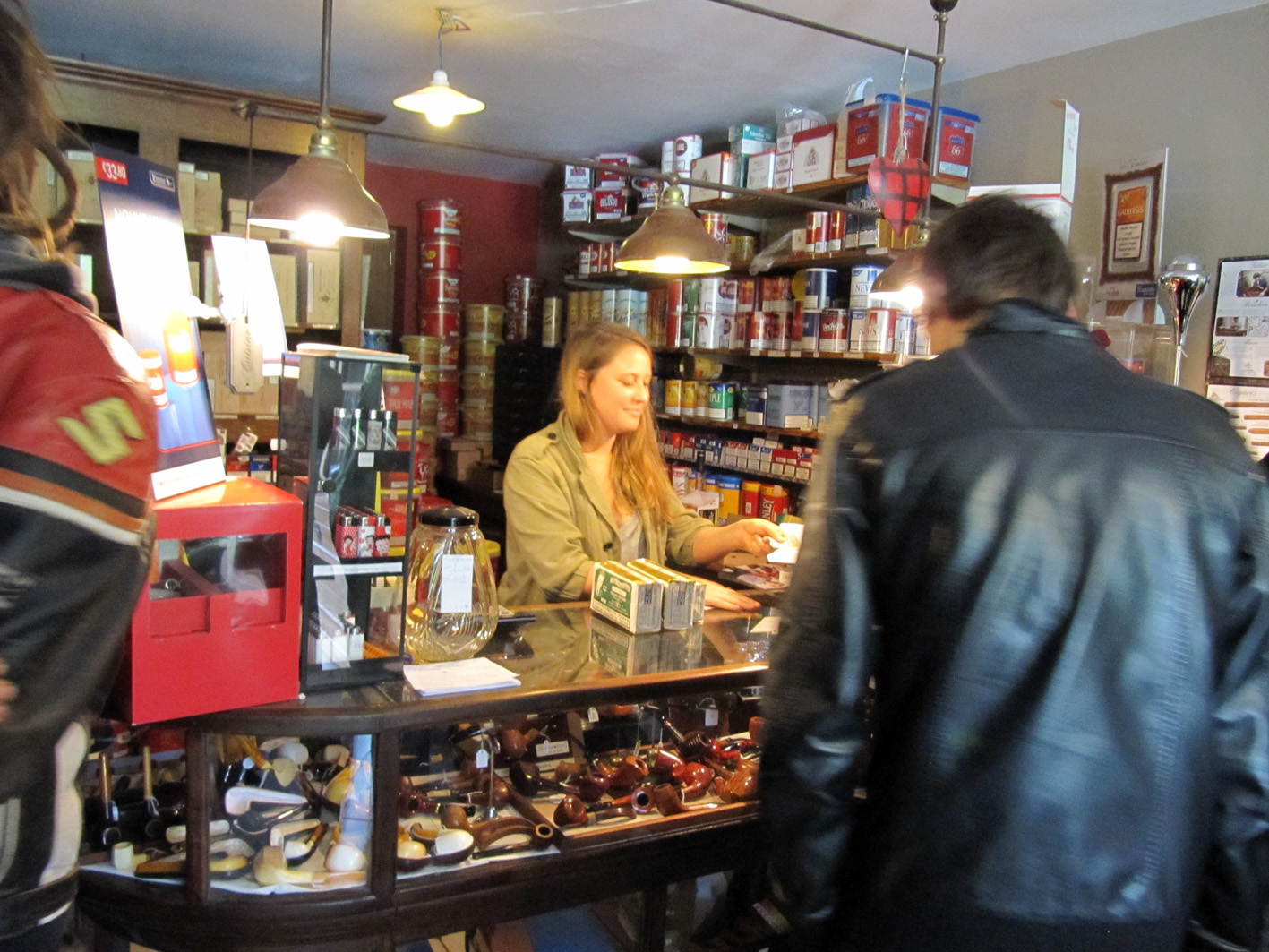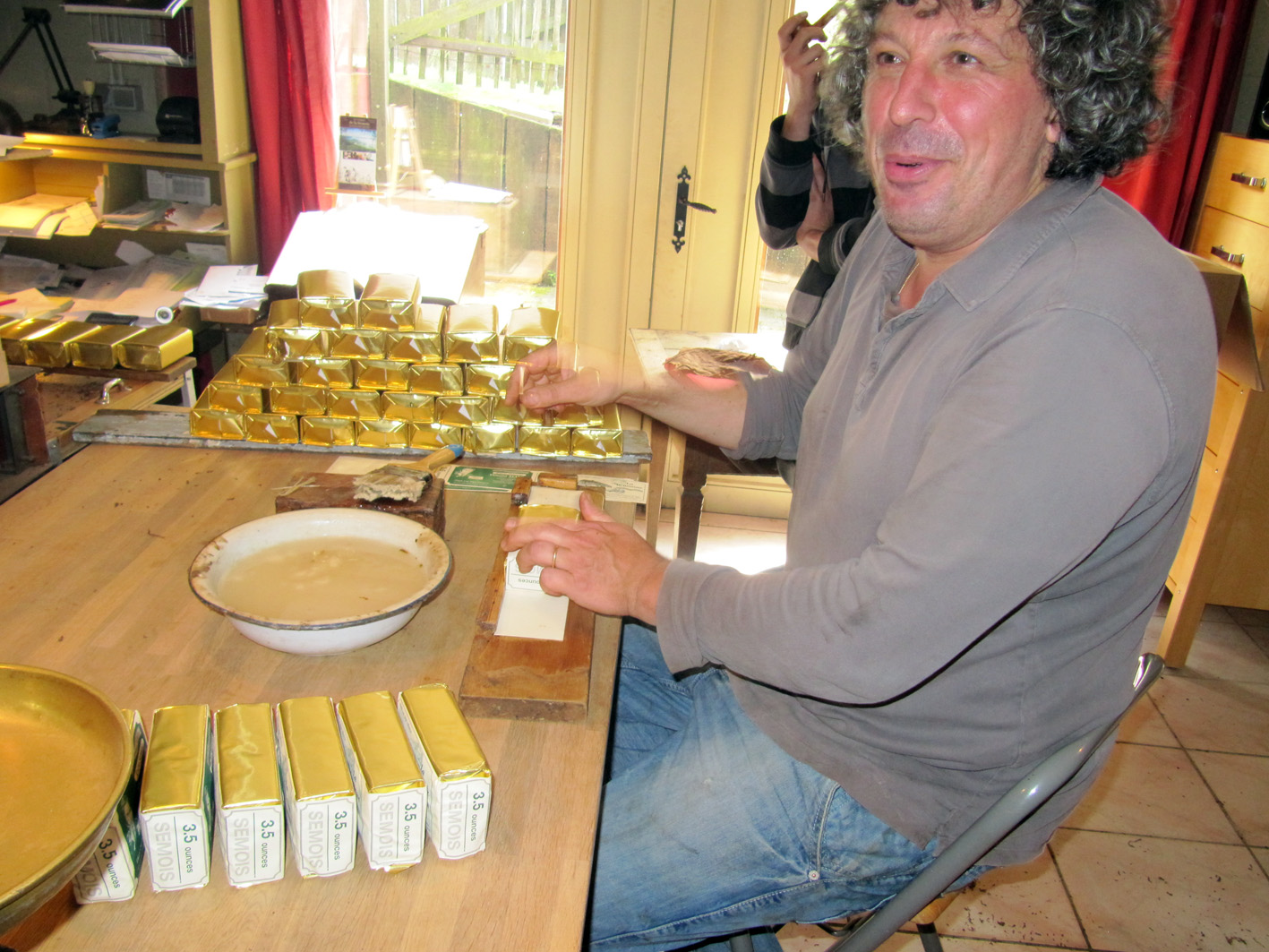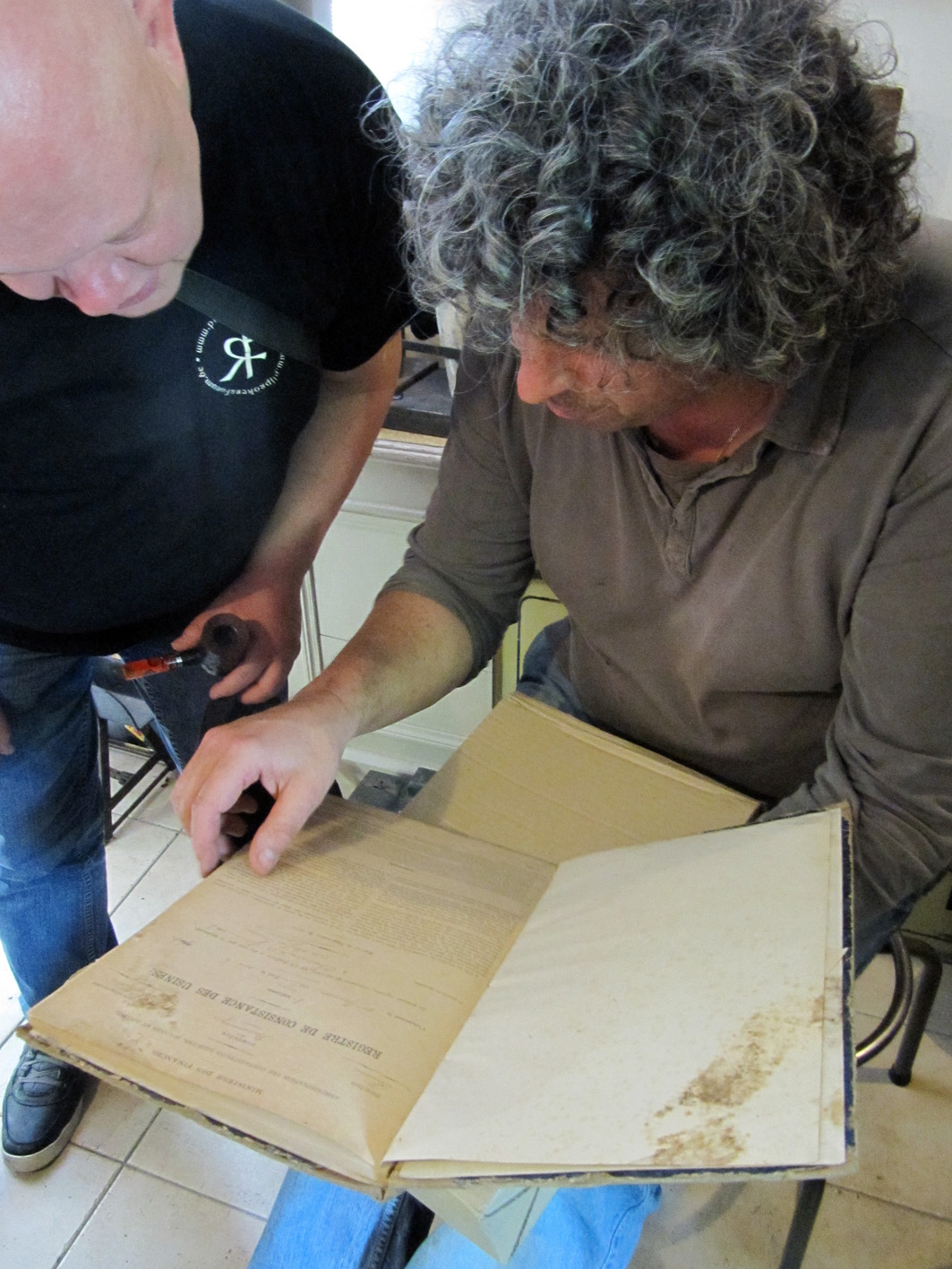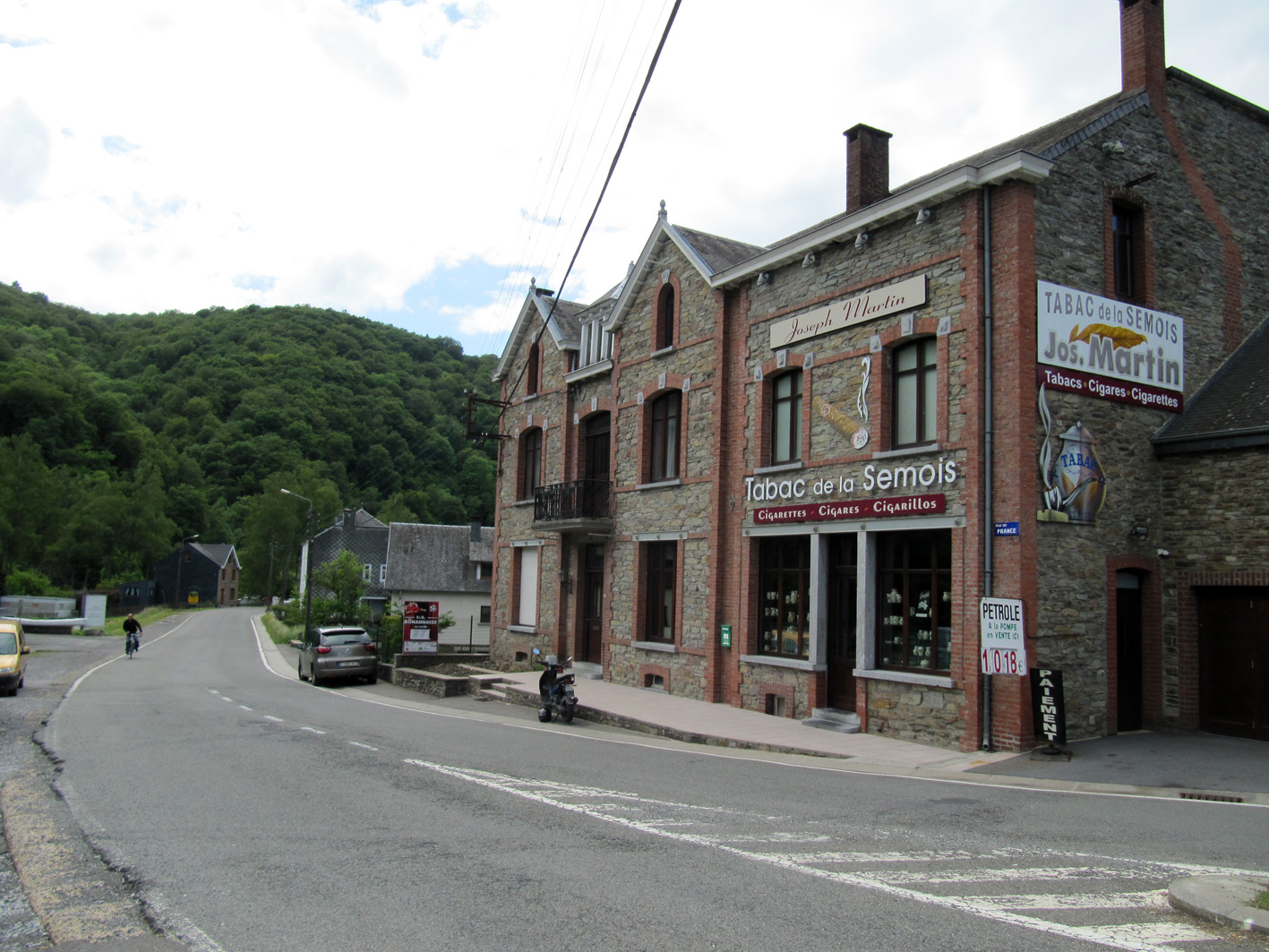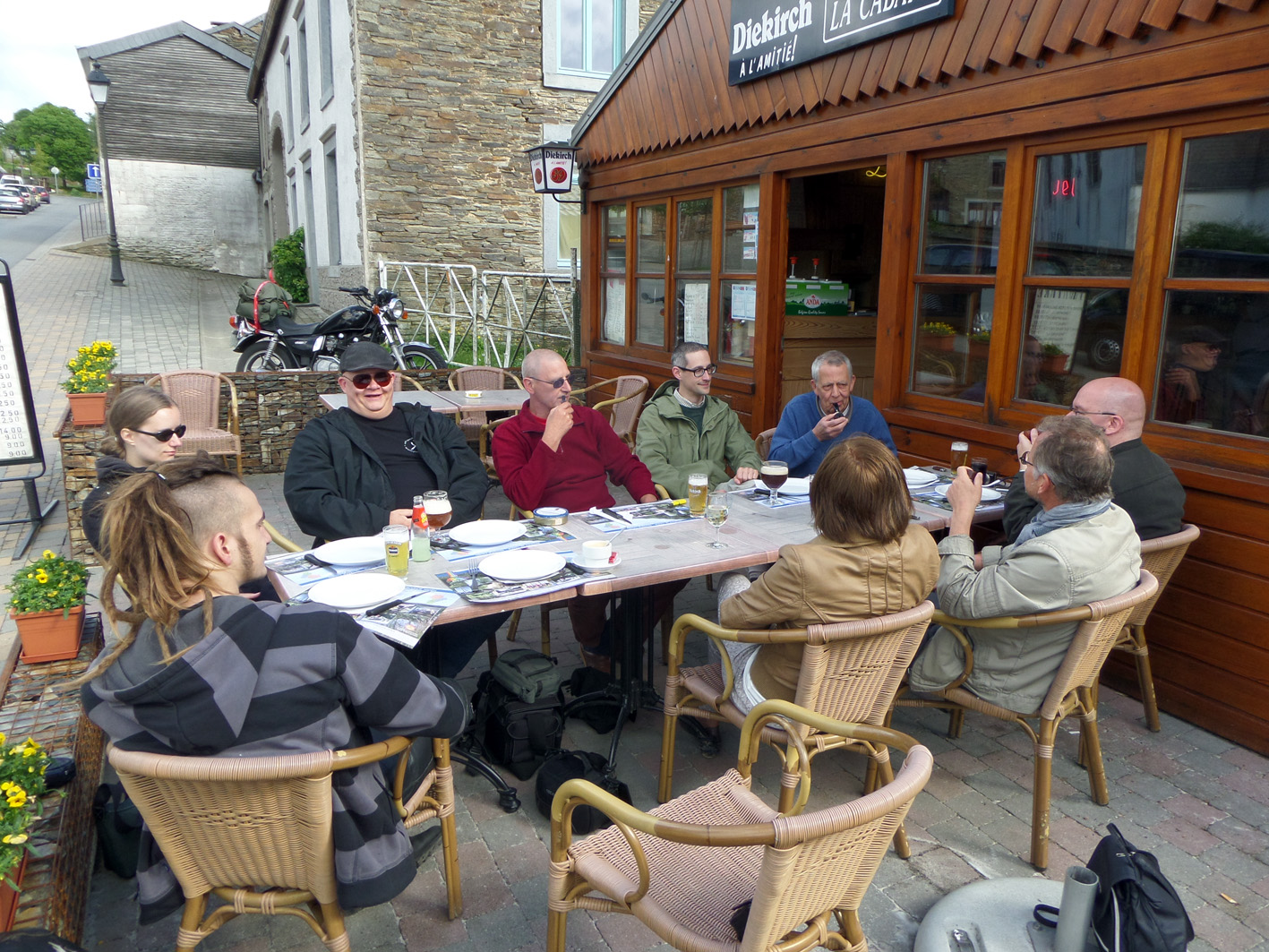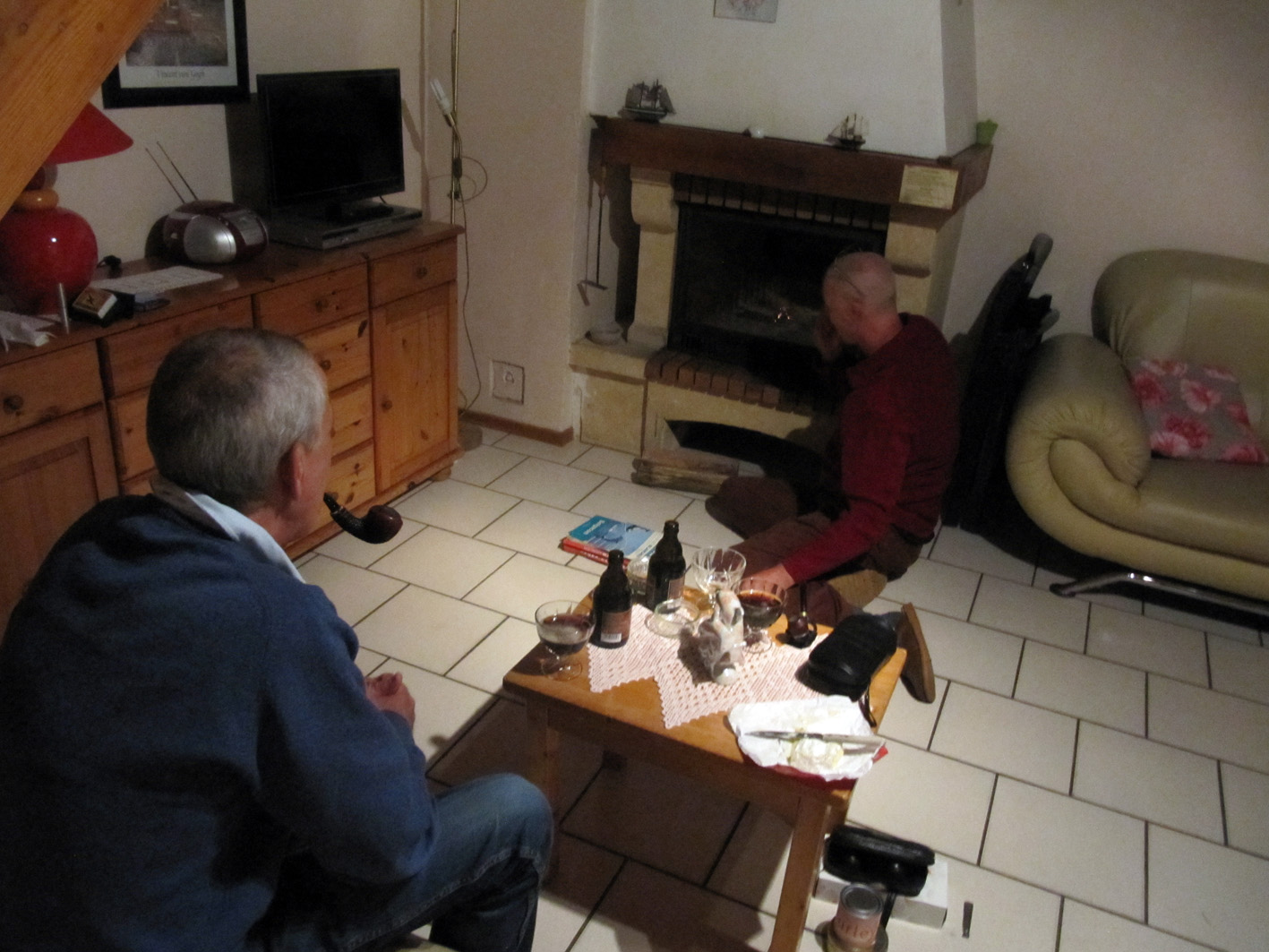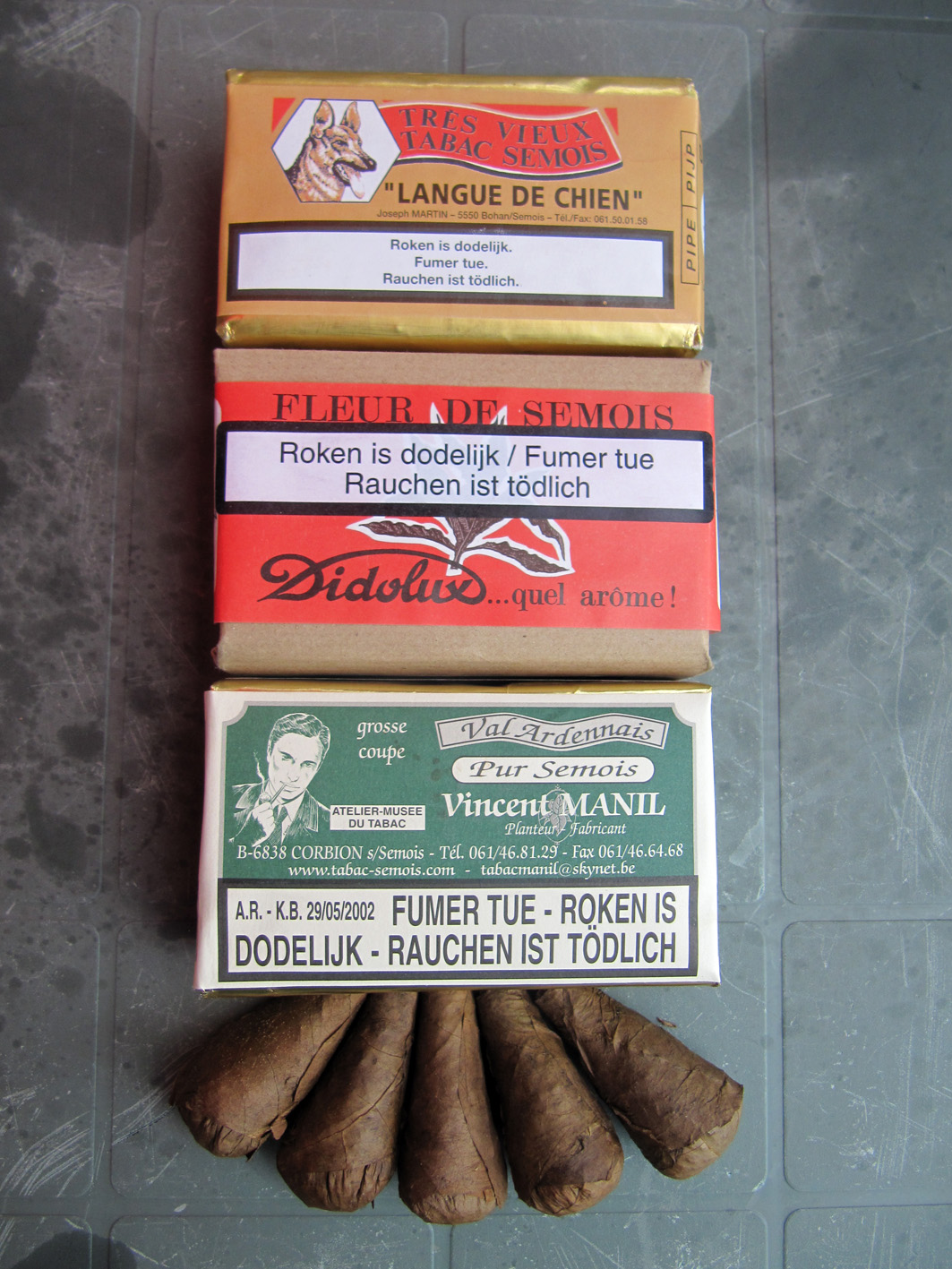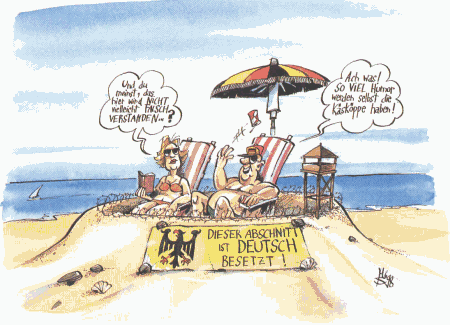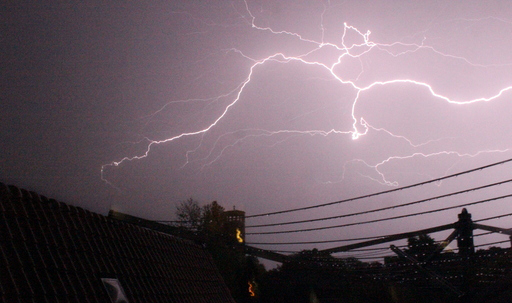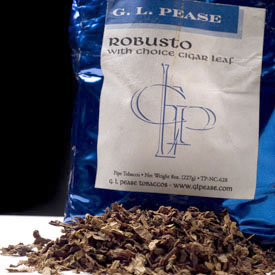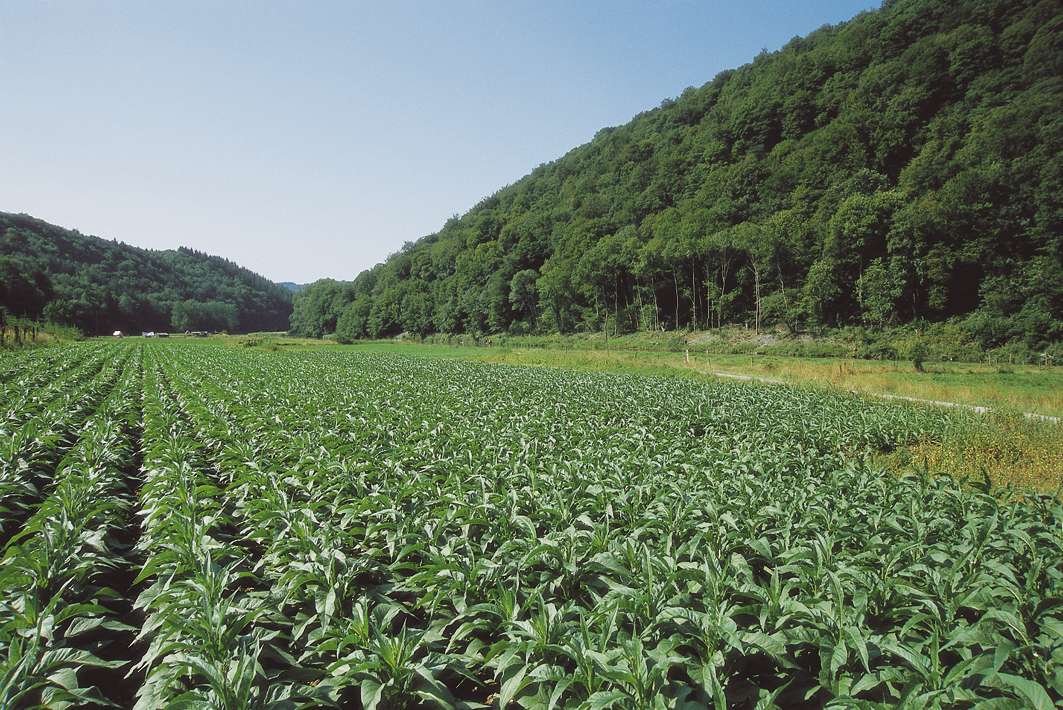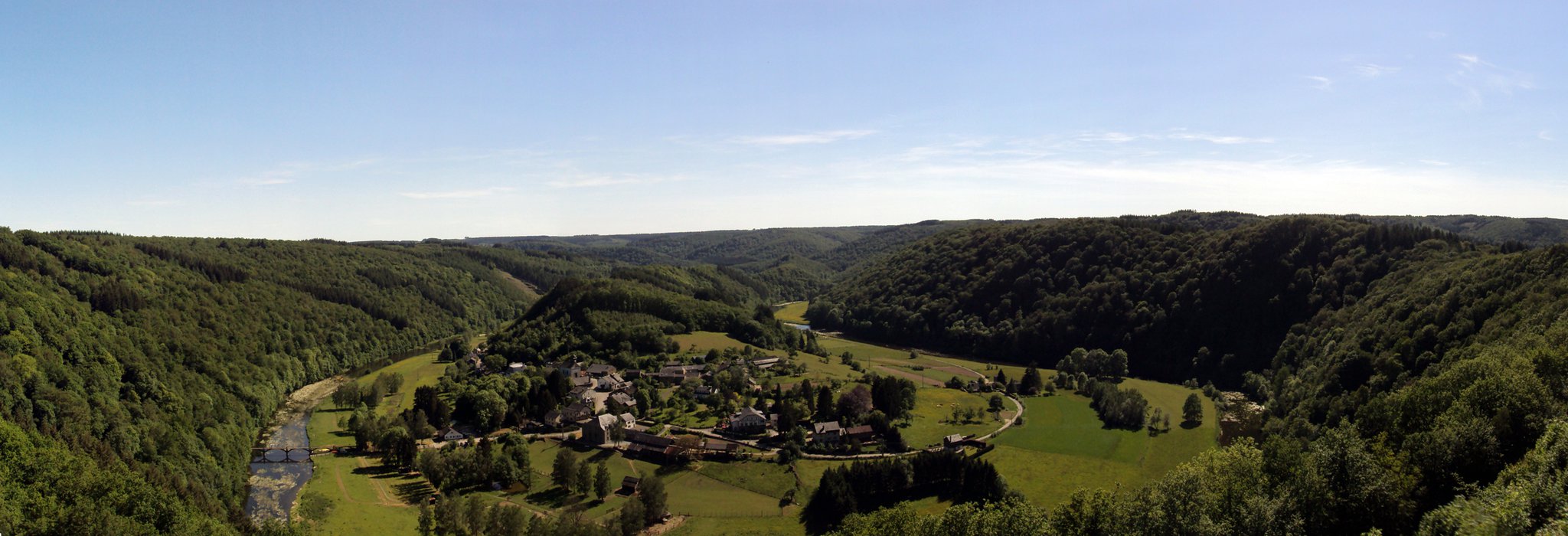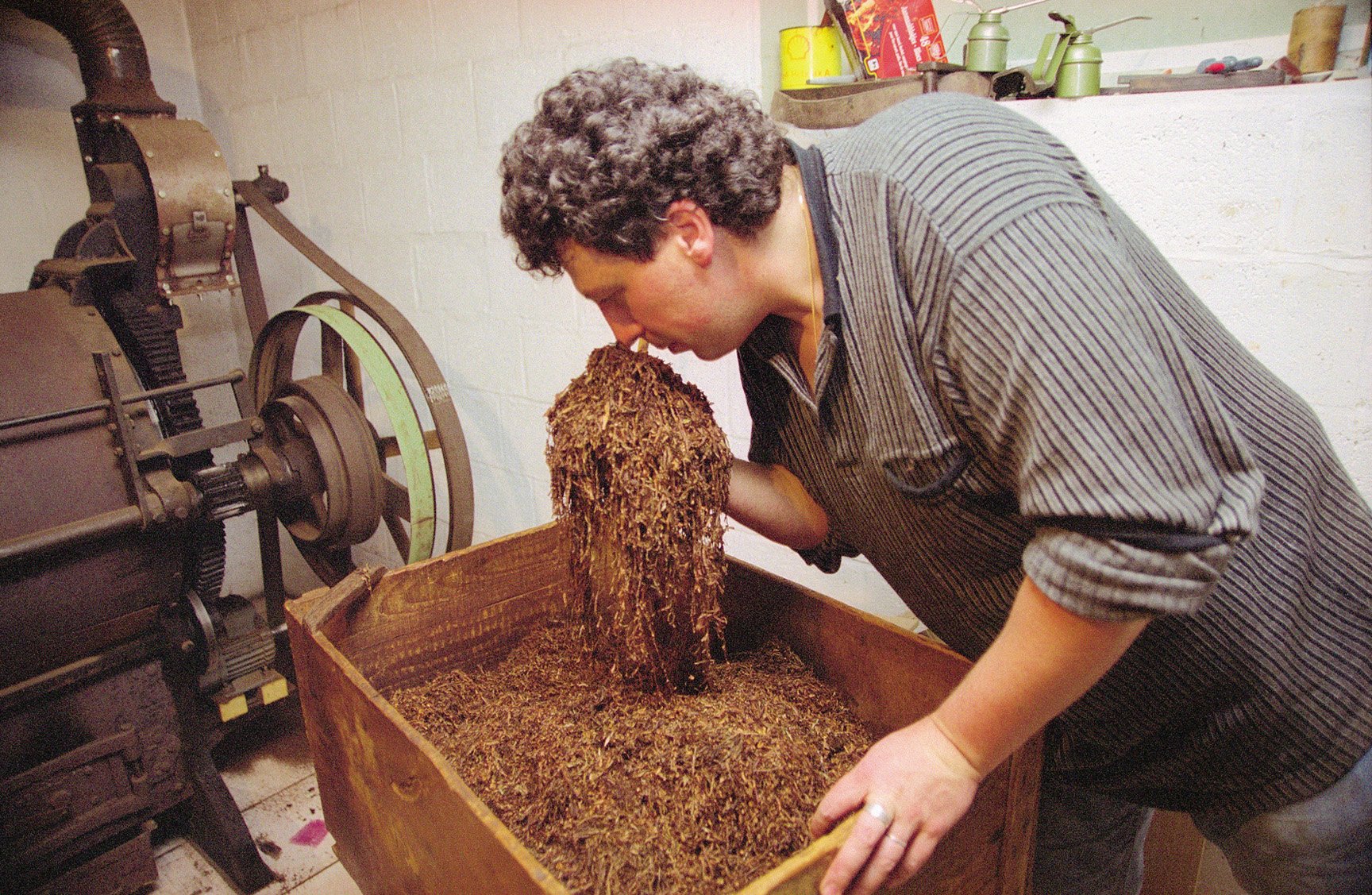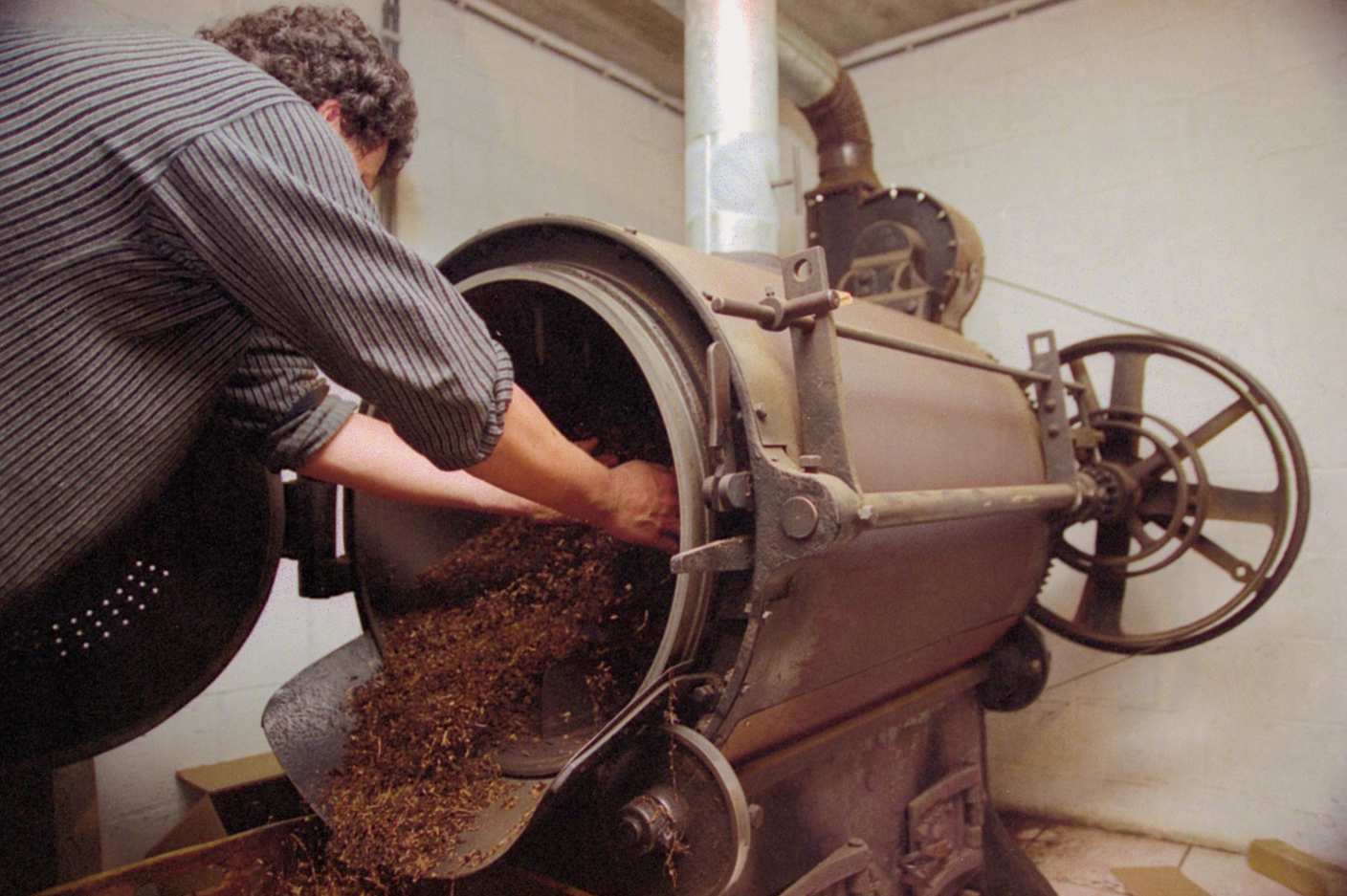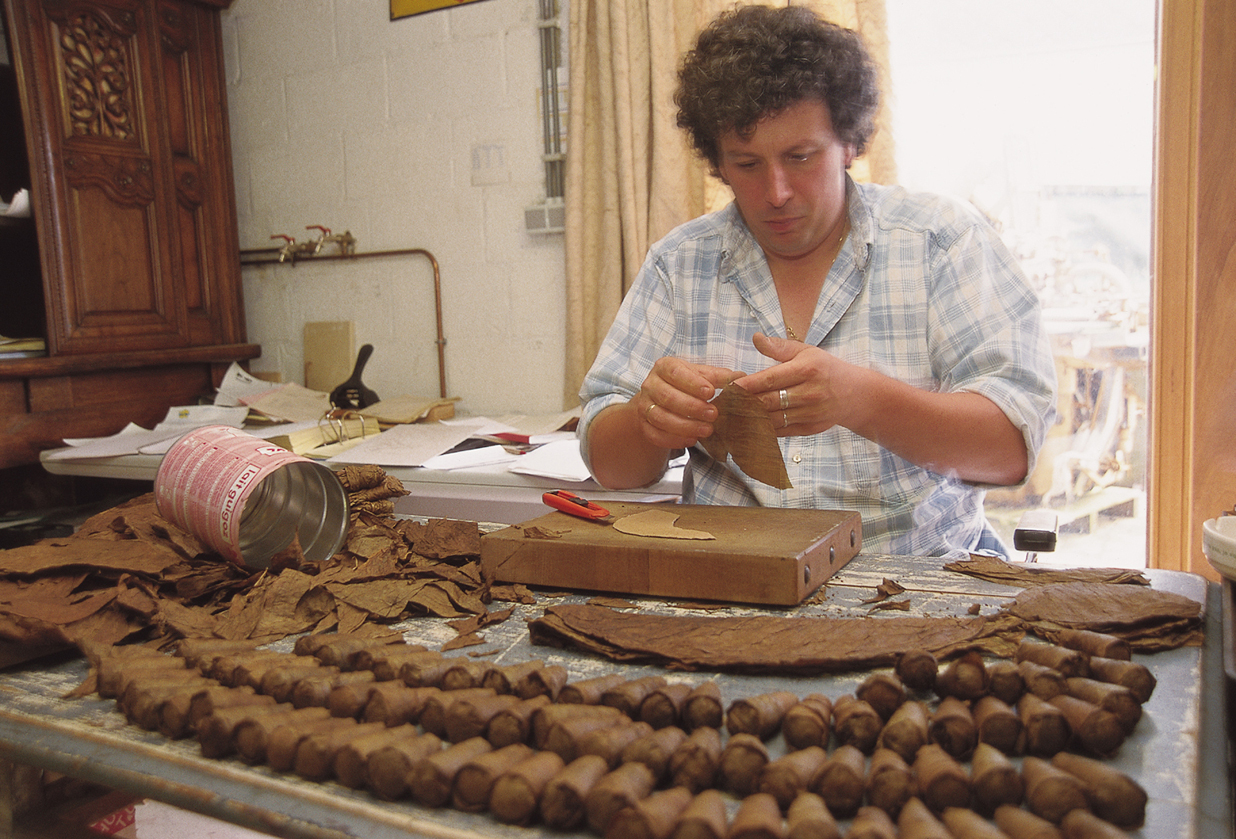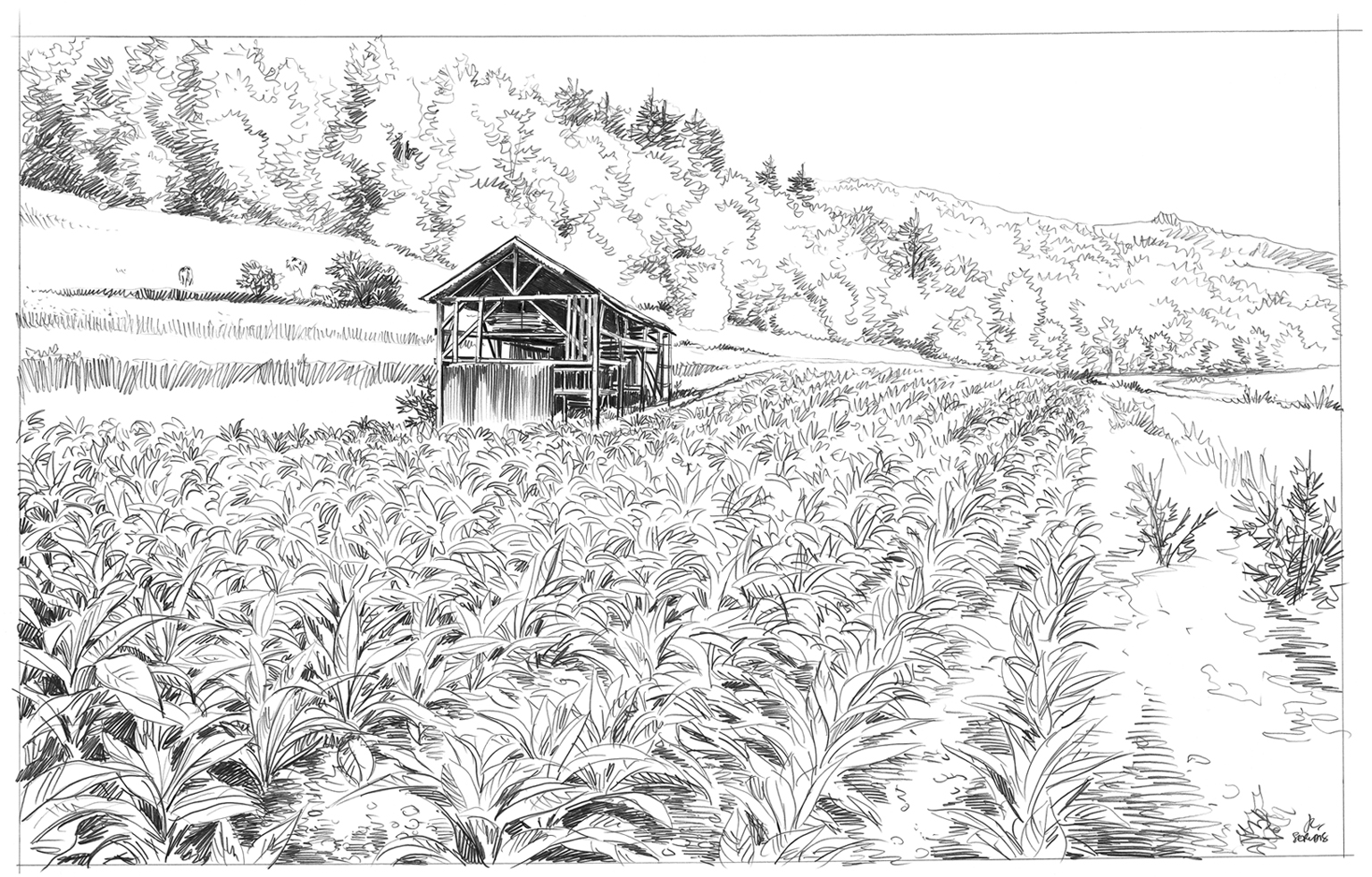Traditionally for Ellen and me June is the month to go on vacation. One has a good chance that the weather is fine, it is not high-season so the prices are reasonable and the really big tourist crowds have not yet arrived. Because of financial reasons we decided to go away for just one week. But where to? We soon choose a location not too far from home: the region of Normandy in France. Well, still a 700 km. drive.. I went searching for a suitable holiday-house (read: good and cheap) and after a few evenings of Google-Fu I found one! An old 17th century home, formerly a cider-press barn, build in the typical style of Normandy and situated in the small village of Notre-Dame-De-Courson. Luckily the owner was an Englishman (a lot of British expats live in Normandy) which saved me the troubles of writing in French (my French is sooo bad..) so the process of booking went smooth.
What not did go smooth was the last part of the journey to the holiday-house. Damn TomTom! I did not study the map of Normandy too well, trusted the navigation device and as a result we got sent over the Pont de Normandie! Beautiful, really, but also expensive (€5,50 to cross 1 bridge!) and a big detour. Once in the villages near our destination I relaxed. I did not expect Normandy to be so hilly, rustic and beautiful! Instant holiday feeling. Of course while driving through the picturesque towns I kept an eye out for tobacco-stores and to my delight I spotted several shops with “Tabac” (tobacco) written above the door.
The “Tabac” is a national institution, a shrine to French culture encapsulated by French cinema, part of the café society and a social necessity. Besides tobacco-products a “Tabac” (they describe themselves as a nationwide 28.000-strong “convenience store” chain) also can sell national lottery tickets, strong black coffee (called “café noir” and yes it is STRONG), cold beer, newspapers, magazines and fiscal stamps. In smaller villages they can act as a post office, headquarters of village sports and cultural associations and even as informal banker when no ATMs are to be found. So it is not strange that anyone planning to set up as a tobacconist first needs clearance from the customs authorities and then must undergo an initial training to enter the craft and after that continuous ongoing refresher courses at regular intervals.
Smoking is as deeply rooted in French society and culture as the Eiffel Tower, the Arc de Triomphe, escargot (snails), high fashion, wine, (smelly) cheeses and champagne. Not even efforts by the government’s health authorities to ban public smoking and educate people about the dangers of tobacco consumption have put a dent in the insatiable craving of France for the smoky leaf. Particularly the famous Gauloises and Gitanes brands. So with that in mind I expected a lot in the pipe-tobacco department. Boy, was I disappointed.. I visited several “Tabac” shops in the towns we went to and everyone of them had more or less exactly the same pipe-tobacco assortment: Saint Claude, Le Supérieur, Amsterdamer and some MacBaren offerings. And all of them vacuum sealed pouches, not a single tin to be found. Perhaps “Tabac” stores in the big cities sell more but the single row of “tabac pour le pipe” in the smaller shops was a bit of a disillusion. And then you have the price.. Wowww.. Dutch prizes, and that means expensive. Since 2000 tobacco prizes have tripled!
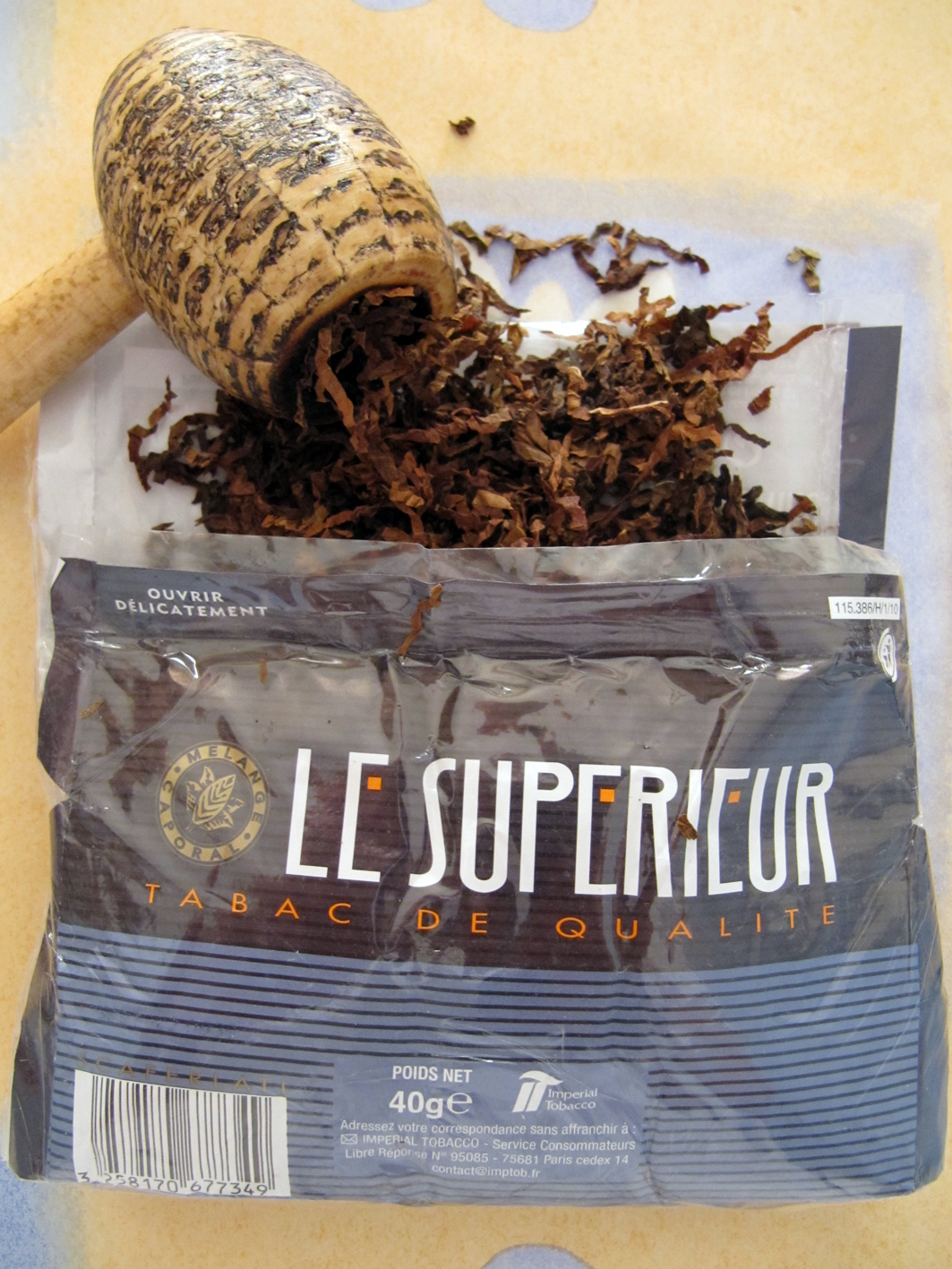 Despite that I decided to buy some Le Supérieur (€8,10 for 40 gr.) at a “Tabac” in the picturesque sea-side town of Honfleur which even had some pipes! The only shop I visited in my vacation that had those but alas, nothing special.. That evening at the balcony of the holiday-house in the last rays of the setting sun I broke the seal of the Le Supérieur pouch and what I smelled and saw was no disappointment at all. My first thought was “Semois“, but with a twist. That being a light topping of I believe to be chocolate. Because of this when smoking the taste is sweeter than that of its Belgian cousin. It is a mellow smoke for sure, no tongue bite and although the level of “cigar-ness” rises throughout the bowl the tobacco never becomes overpowering. So I was a bit surprised that the tobacco packed a good punch of the ol’ lady nicotine. Although I could have known this because Semois also has a lot of vitamin N. I loved the rustic side of this blend, it is a no-nonsense tobacco, a true all-day smoke.
Despite that I decided to buy some Le Supérieur (€8,10 for 40 gr.) at a “Tabac” in the picturesque sea-side town of Honfleur which even had some pipes! The only shop I visited in my vacation that had those but alas, nothing special.. That evening at the balcony of the holiday-house in the last rays of the setting sun I broke the seal of the Le Supérieur pouch and what I smelled and saw was no disappointment at all. My first thought was “Semois“, but with a twist. That being a light topping of I believe to be chocolate. Because of this when smoking the taste is sweeter than that of its Belgian cousin. It is a mellow smoke for sure, no tongue bite and although the level of “cigar-ness” rises throughout the bowl the tobacco never becomes overpowering. So I was a bit surprised that the tobacco packed a good punch of the ol’ lady nicotine. Although I could have known this because Semois also has a lot of vitamin N. I loved the rustic side of this blend, it is a no-nonsense tobacco, a true all-day smoke.
Also in Honfleur I stumbled upon a modern and sterile looking store with strange, colourful things in the shop-window. When I came closer I saw to my utter horror nothing but e-smoke products, there even was an e-pipe! With a hand in front of my mouth, preventing me from painting the store-front with vomit, a quick look inside revealed it was the only stuff they sold. Aarghhh! It seems the e-cigarette market has exploded over the past two years in France. For a fraction of the cost of a pack of cigarettes or a pouch of pipe-tobacco smokers can choose an e-liquid flavour, preferred level of nicotine and even personalize the damn thing itself. A survey carried out by Ipsos in December 2013 revealed one in five French people (that is around 10 million!) had tried an e-cigarette. At the same time sales of traditional cigarettes dropped by just over 7%..
Despite the success of e-smoking the French keep on consuming tobacco. The number of French smokers is actually increasing! Since 2005 the percentage of people between the ages of 18 and 75 who smoke has gone from 28% to 30%. The biggest “problem” with French anti-smoking laws is the lack of enforcement. People still smoke in places where it is clearly banned. For example, in Ireland the smoking ban was followed by more than 25.000 inspections in the first year. In France there were only 600 inspections. Way to go! Also about one-fourth of cigarettes consumed in France are believed to have originated from foreign countries. The French (like the Dutch) know their ways better and better to the borders of Spain, Belgium, Luxembourg and Germany where tobacco is much cheaper.
Anyway, enough with the smoking, now something about the other good things of life. I named this blogpost “Nourishingly Normandy” because the region feeds you with everything that you need: food, drinks and culture. Here are ten tips about those three things.
1. Visit Mont Saint-Michel, one of the big tourist traps of France but of such awesome beauty that going there is mandatory. Try to arrive as early in the day as possible to avoid the large crowds. If you go by car do not park it at the big parking-lot of the Mont, it is €xpen$ive.. In stead put it in a smaller parking lot a couple of hundred meters before the one of the Mont. Also take your lunch with you. Most restaurants inside the Mont are not cheap to say the least.. Besides, you will never forget eating your baguette sitting on the outside walls of the Mont while watching the sea and avoiding the not-so-shy seagulls.
2. Talking about baguettes, every French village of a certain size is required by law to have a “boulangerie” (bakery) or some other place where you can buy bread. So every morning I awoke at 7 a.m., hit the shower and drove to the local boulangerie to buy still warm baguettes and croissants. When I got back Ellen had set up the table and we could have a tasty breakfast.
3. Visit the beaches from D-Day and the American Cemetary and Memorial (featured in the beginning of Steven Spielberg’s film Saving Private Ryan) at Colleville-sur-Mer. It is a more than impressive and touching sight to see all the graves of the brave men who gave us our freedom. “Think not only upon their passing, remember the glory of their spirit”.
4. France is all about beautiful and well preserved ancient churches and cathedrals. Ellen and I visited the cathedrals of Lisieux and Bayeux. Just soak up the sacrosanct atmosphere while you silently shuffle besides centuries-old altars, paintings, statues, stained glass windows and graves. And while you are in Bayeux pay a visit to the almost 1000-year old Bayeux-tapestry, very much recommended! If you want to see a stupendously big building, go to the Basilica of St. Thérèse in Lisieux.
5. Normandy is THE region for soft cheeses like Camembert, Livarot, Pont-l’Évêque and Boursin. All supermarkets will have an assortment of local cheeses but the most fun is to buy those directly from the farm. Alongside roads there are usually signs (“ferme laitière”). I bought a Livarot cheese from the Thébault farm, my first experience with a soft French cheese besides the well-knows President Camembert and Boursin. Livarot cheese is pungent, spicy, earthy, full of flavour and it makes your refrigerator stink for weeks. Ellen would not touch the stuff, I loved it.
6. Visit the picturesque, most charming sea-side town of Normandy: Honfleur. Long a favourite with painters but now more popular with the Parisian jet set. Even though it can be overrun with tourists like myself in the summer months, it is hard not to love its graceful beauty. The heart of Honfleur is the Vieux Bassin (Old Harbour), from where explorers once set sail for the New World. This part of the port is surrounded by a lot of brightly coloured buildings that evoke maritime Normandy of centuries past. Beware, if you want to have a good meal, do not eat in one of the restaurants around the old harbour (expensive and lacking in quality). In stead go to a restaurant in the town centre. I personally recommend Le Corsaire, which brings me to my next tip.
7. Have lunch and dinner in a local restaurant. The French like a warm, savoury “déjeuner” (lunch) so when in Honfleur Ellen and I visited Le Corsaire. Most restaurants have a couple of menus, that means you pay a fixed price and choose between several appetizers, main courses and desserts. We choose the cheapest (€15,50) and got real value for money. Try the “Moules à la crème ou mariniére” (Mussel marinated with cream), di-vine yummieness! On the last evening of our stay we went to Le Tournebroche in Notre-Dame-De-Courson to have dinner. They serve excellent local cuisine with a modern twist. I asked for a side-dish, the infamous Escargot (snails), because I never had those. They look unappetizing but taste surprisingly delicious thanks to the garlic-sauce in which they bathe.
8. Visit Chateau de Saint-Germain-De-Livet. A very picturesque castle build for a part in typical Normandic-style between 1561 and 1578. There are guided tours in French (with printed sheets in several languages) and you also have access to the surrounding garden.
9. Go to a local market in one of the surrounding towns. We went to the market in Saint-Pierre-Sur-Dives. It has an ancient market hall dating from the 11th century which was bombed during WWII but has been completely rebuilt using the traditional methods. The market itself is loaded with local food and drink products such as vegetables, fruits, cheeses, ciders and calvados. You can also find flowers, livestock, clothes, bags and accessories etc.
10. Buy local cider at the cider-press barn itself. Look for signs with “cidre” on them alongside roads. We went to one situated next to a crumbling house just outside Notre-Dame-De-Courson, ferme Belleau. The owner was having lunch but welcomed us nonetheless. I asked “Je voudrais acheter cidre?” (Can I buy cider?) and we were led to a large barn. Inside there was a pungent but inviting smell of apples and alcohol and a lot of equipment. The owner asked us which varieties we wanted and I choose several. Price per bottle: only €2,50. Vive la France!

